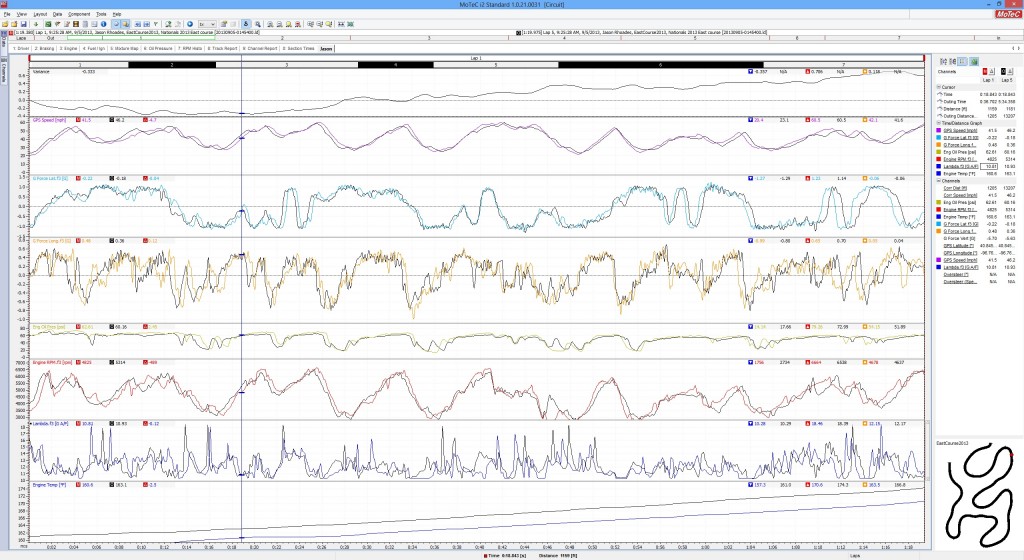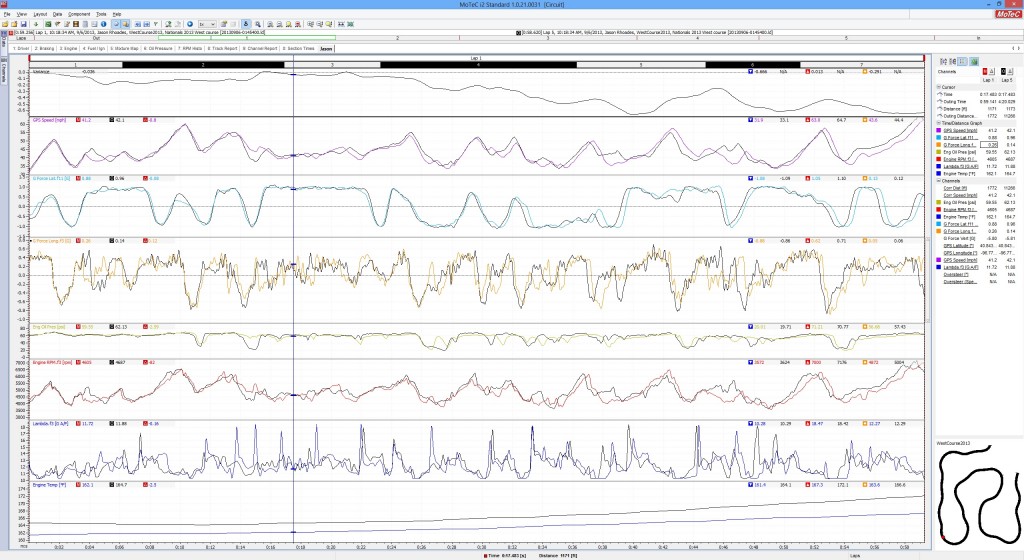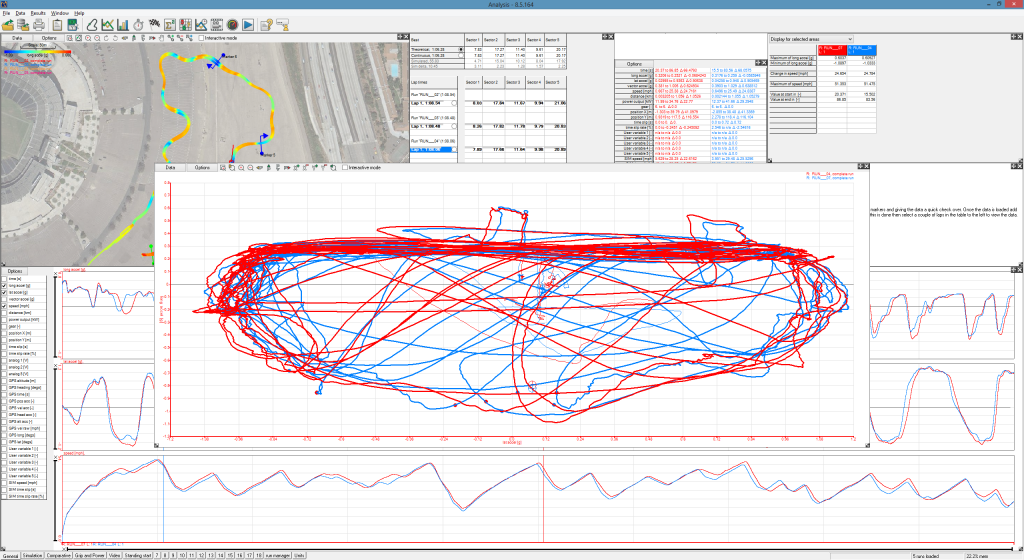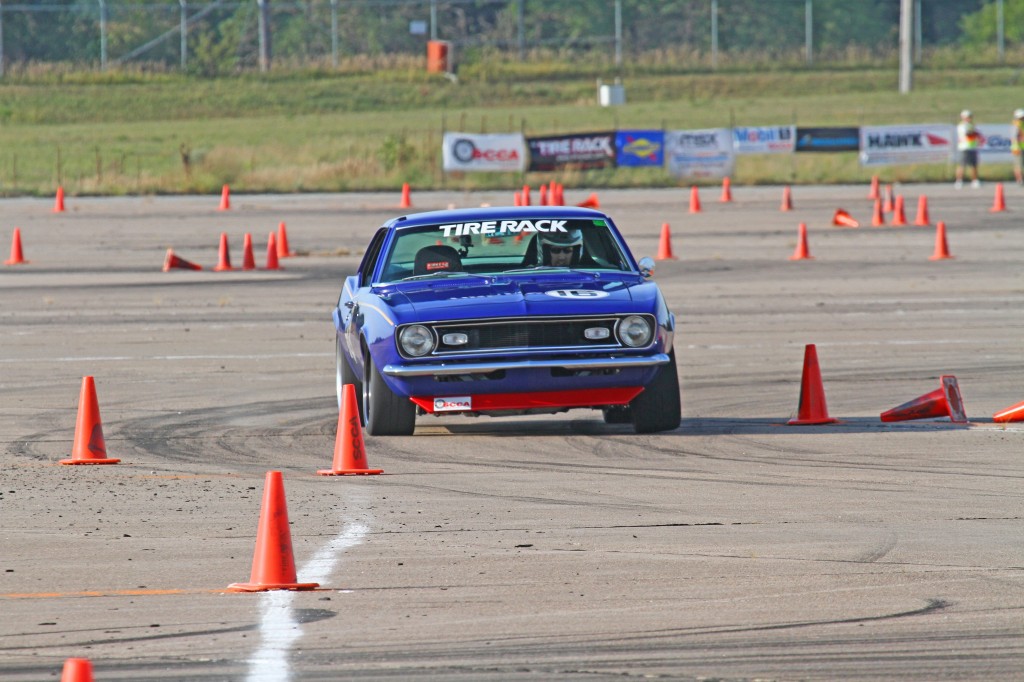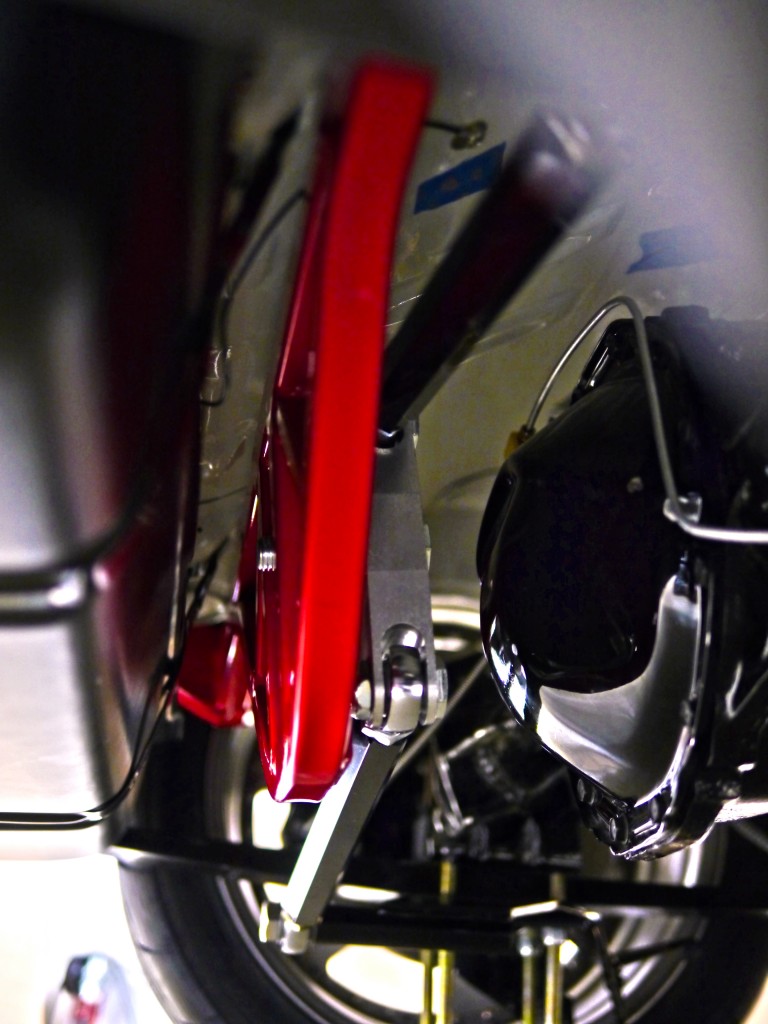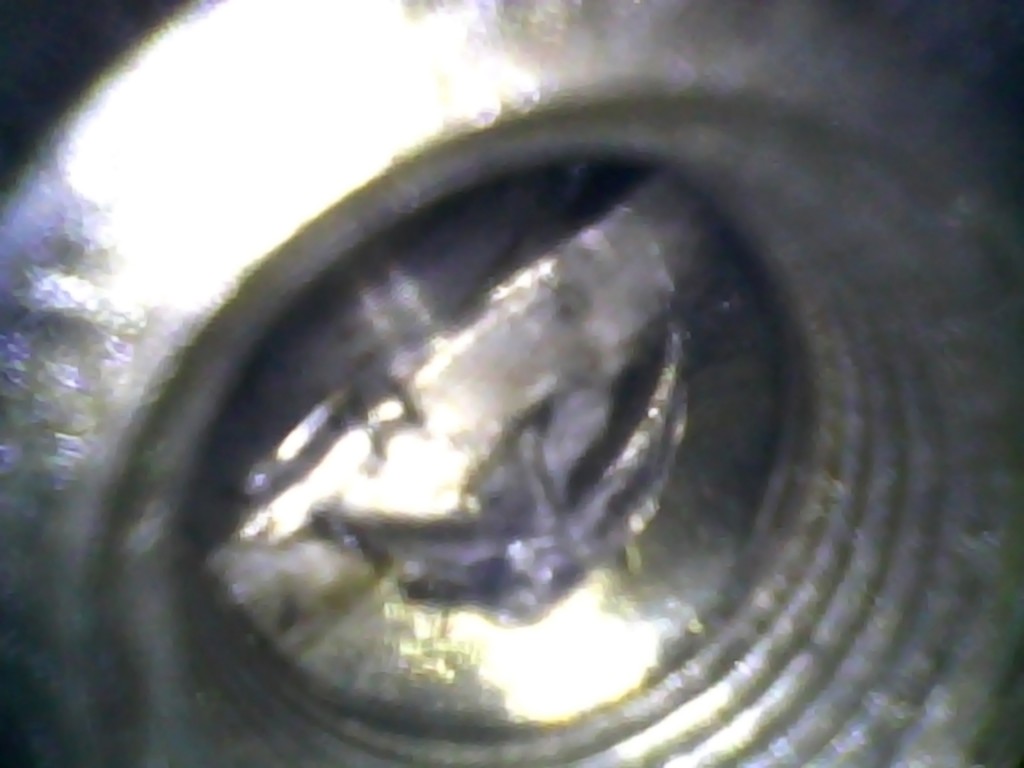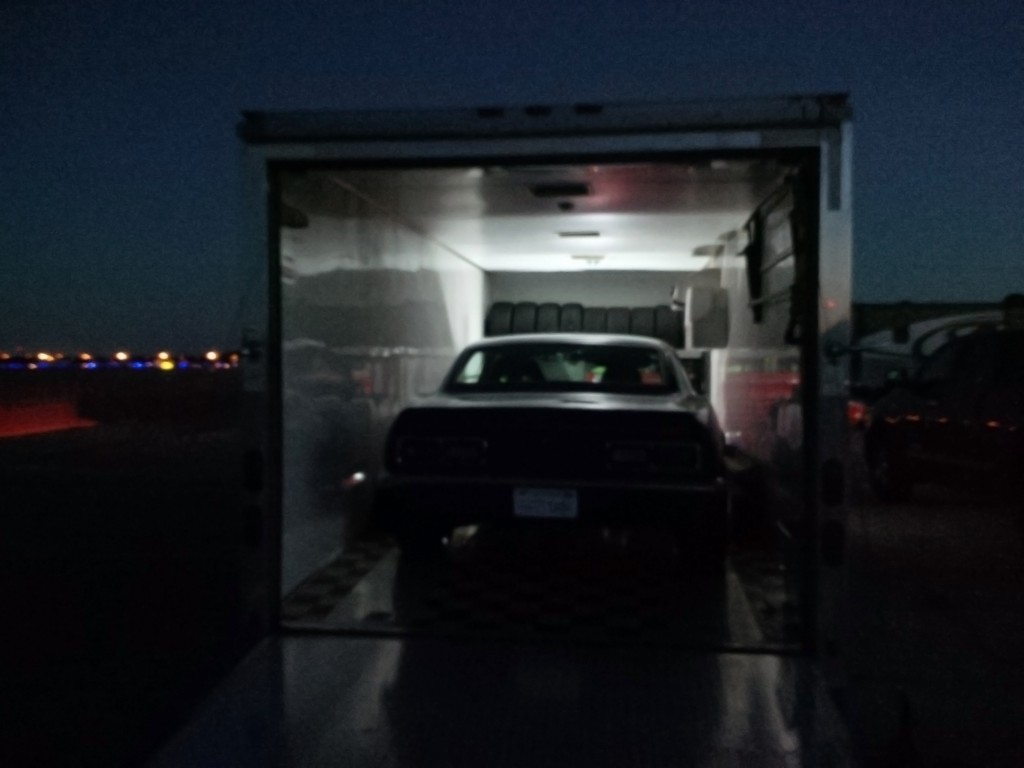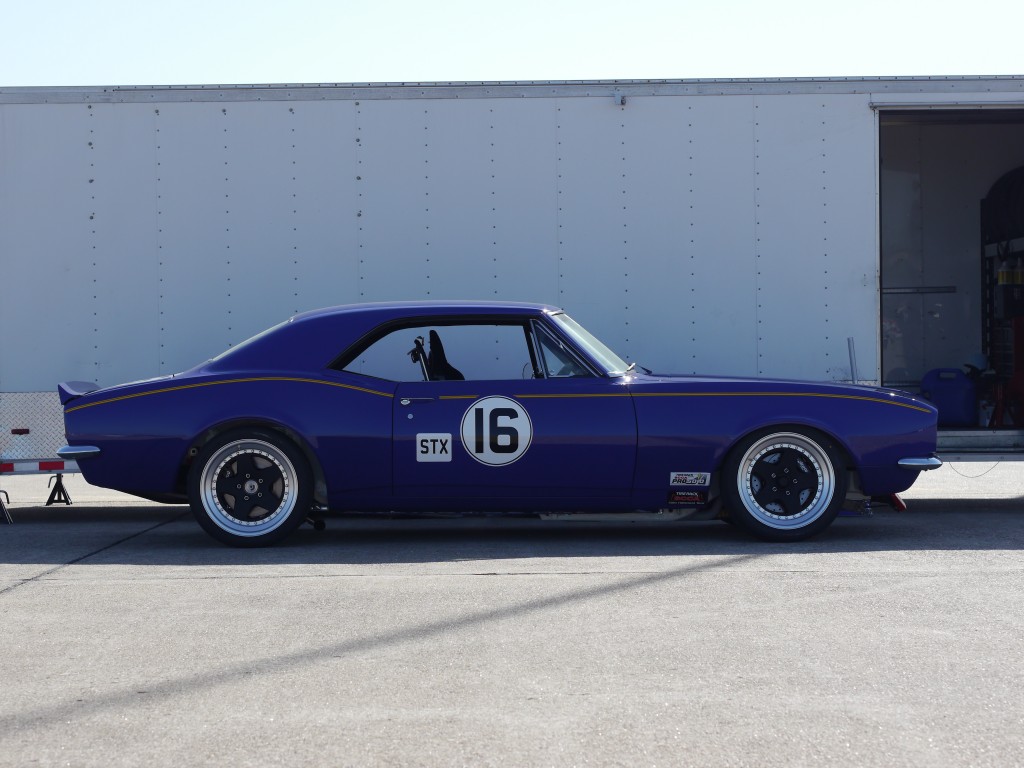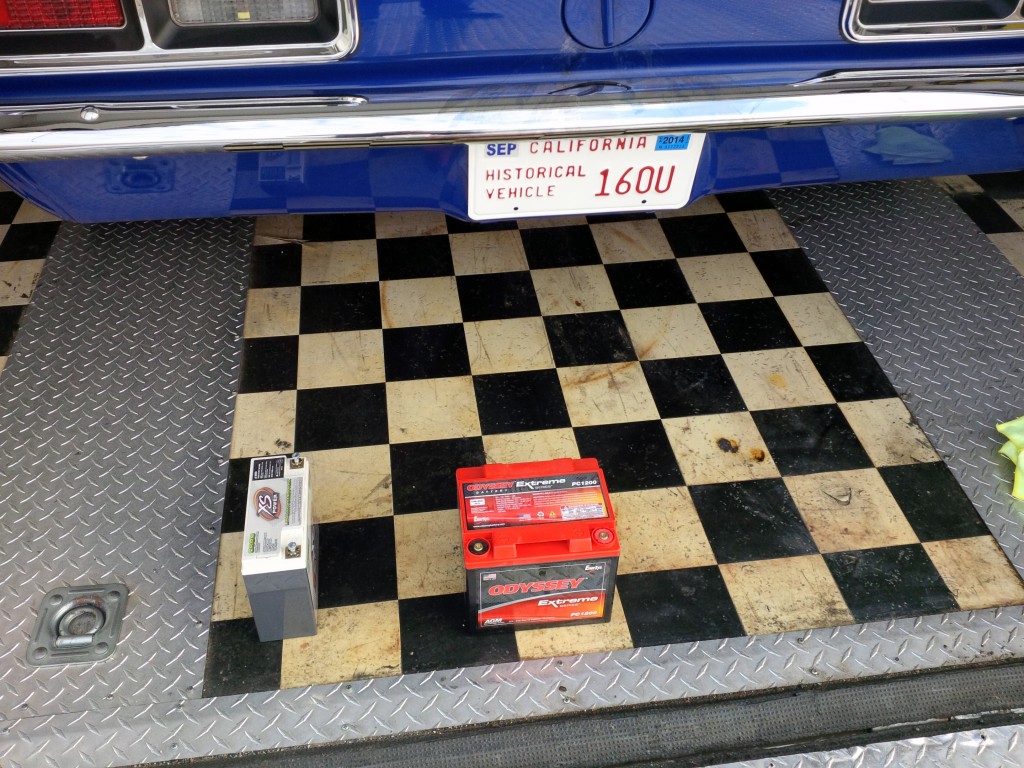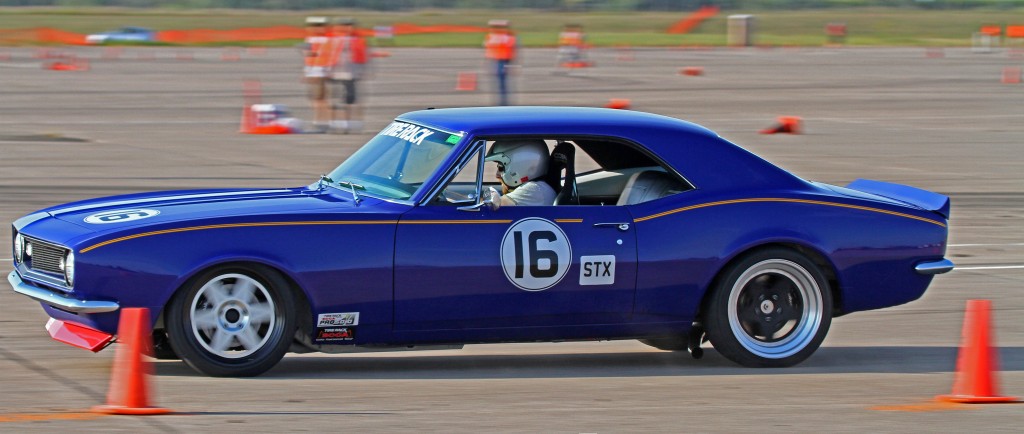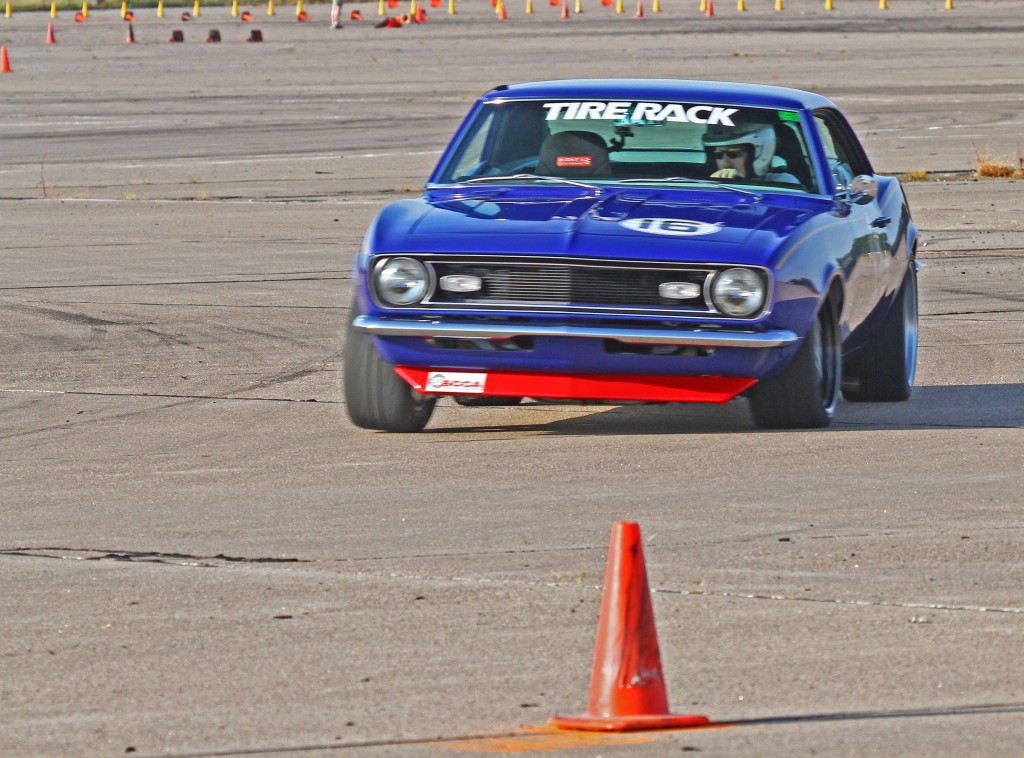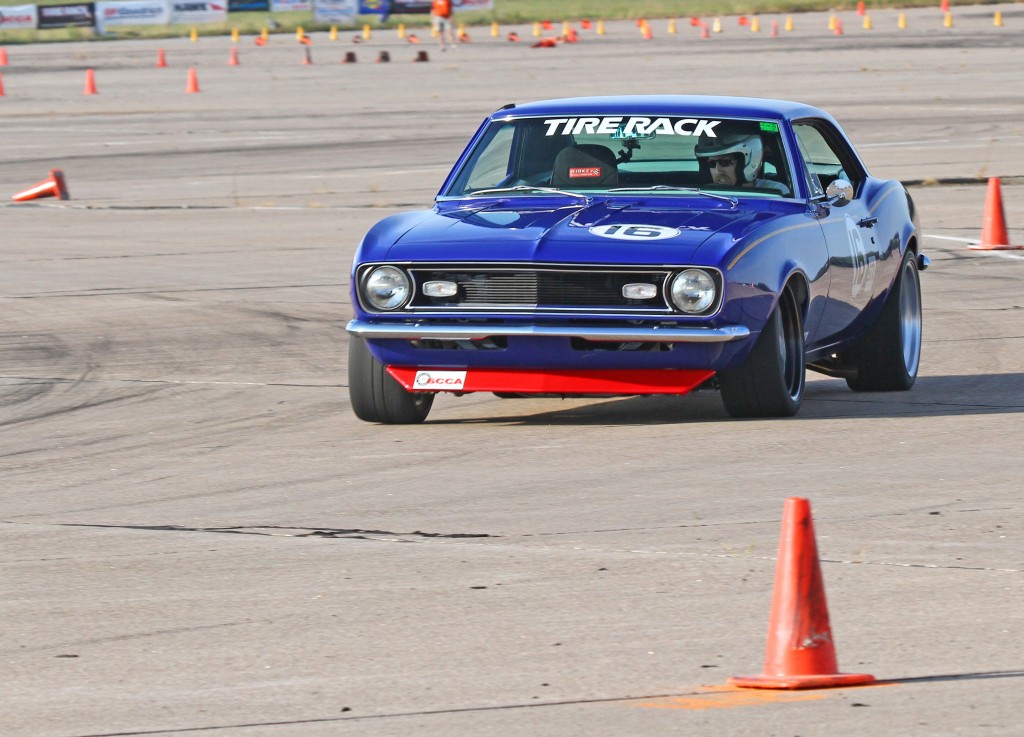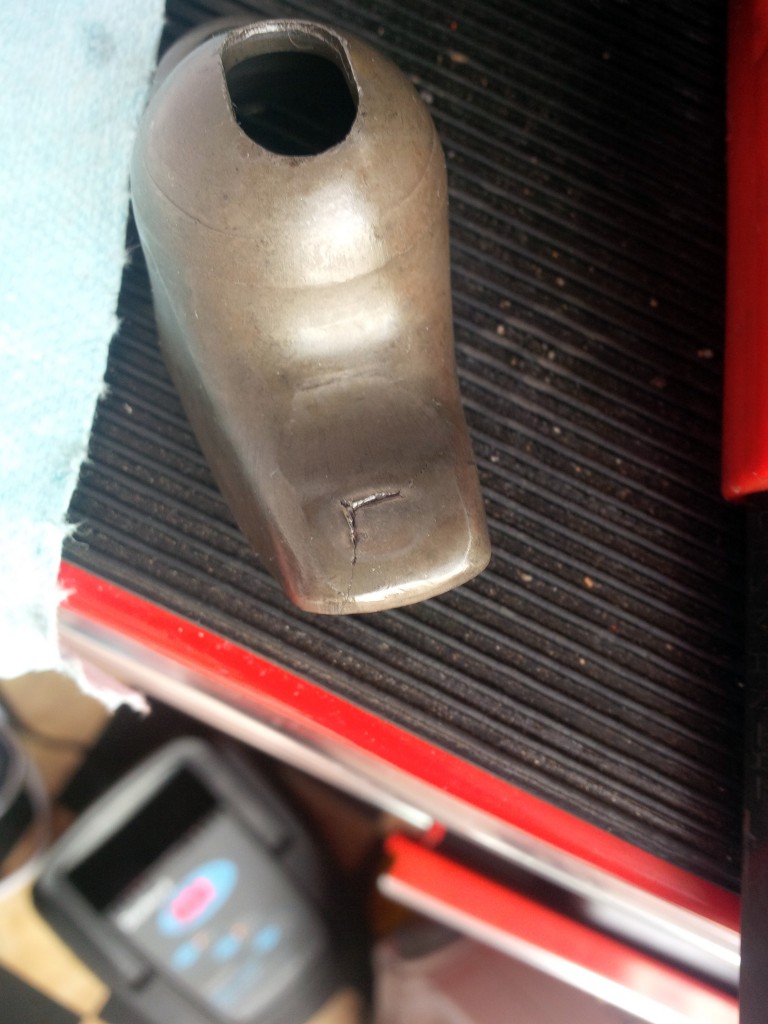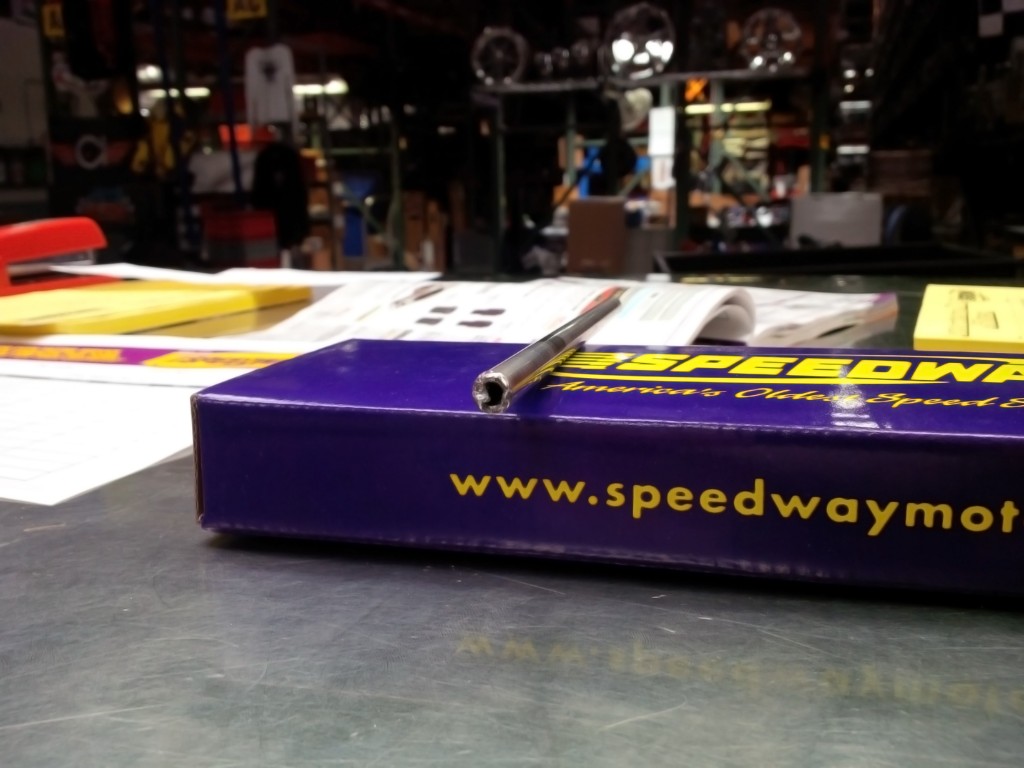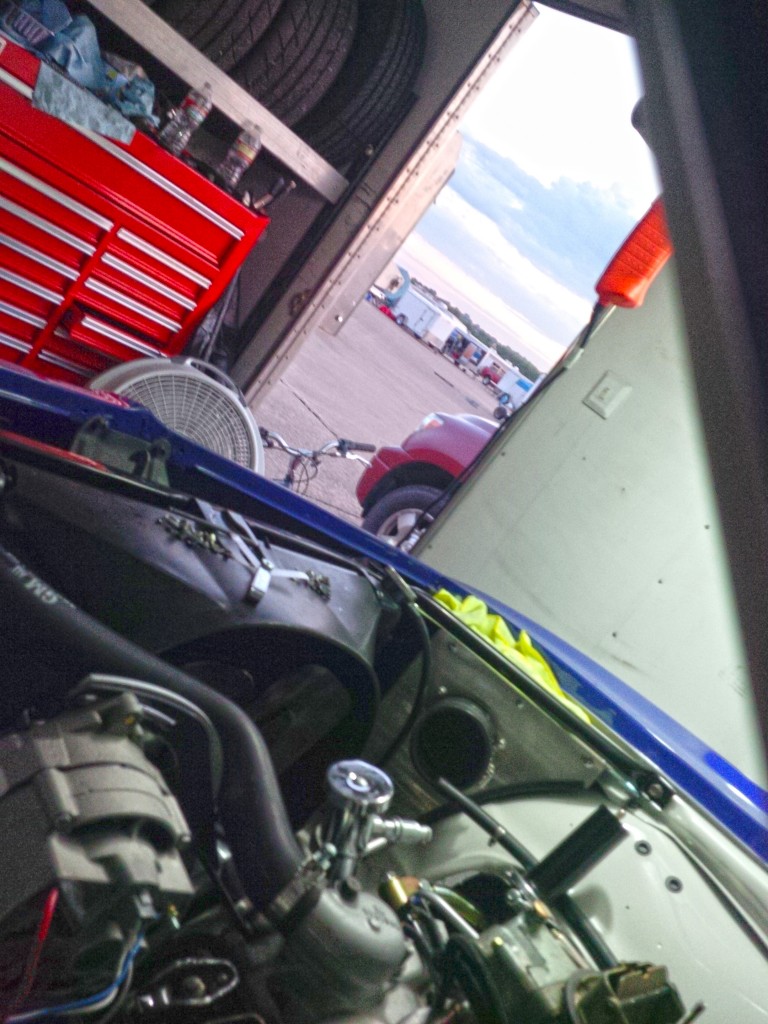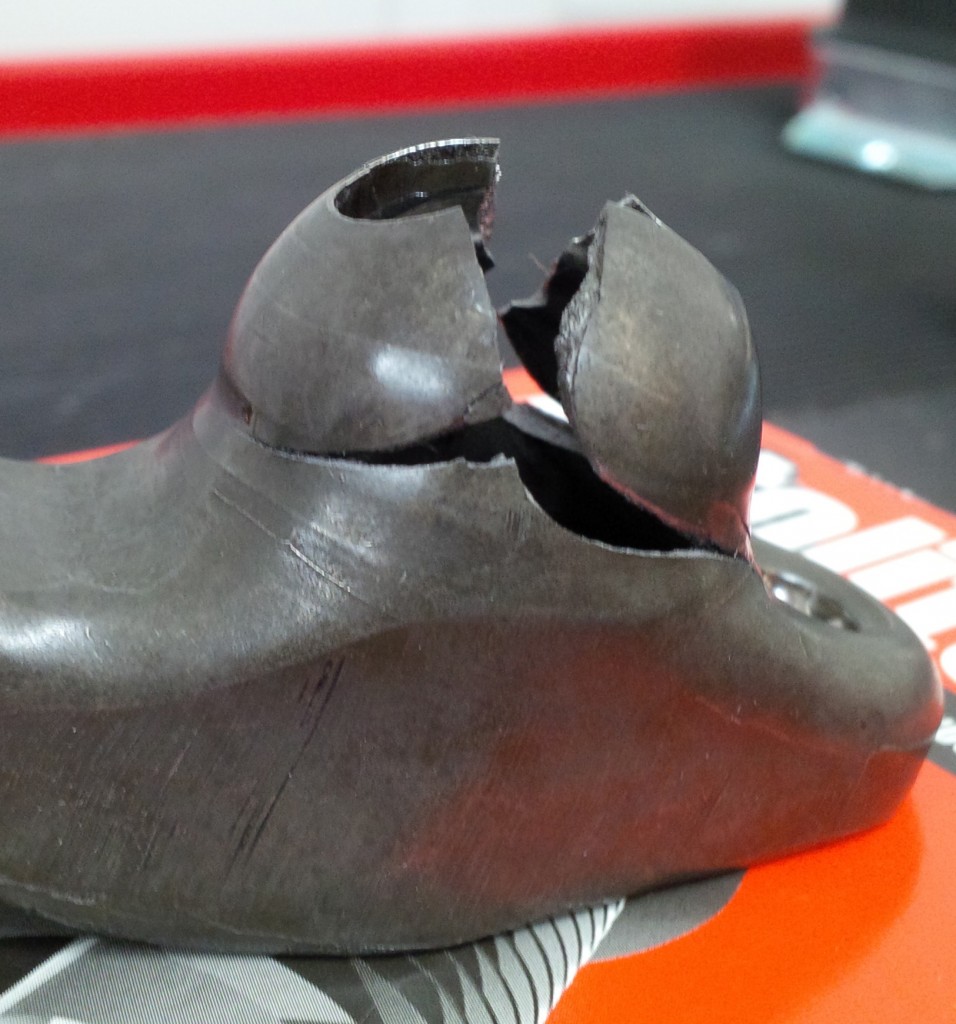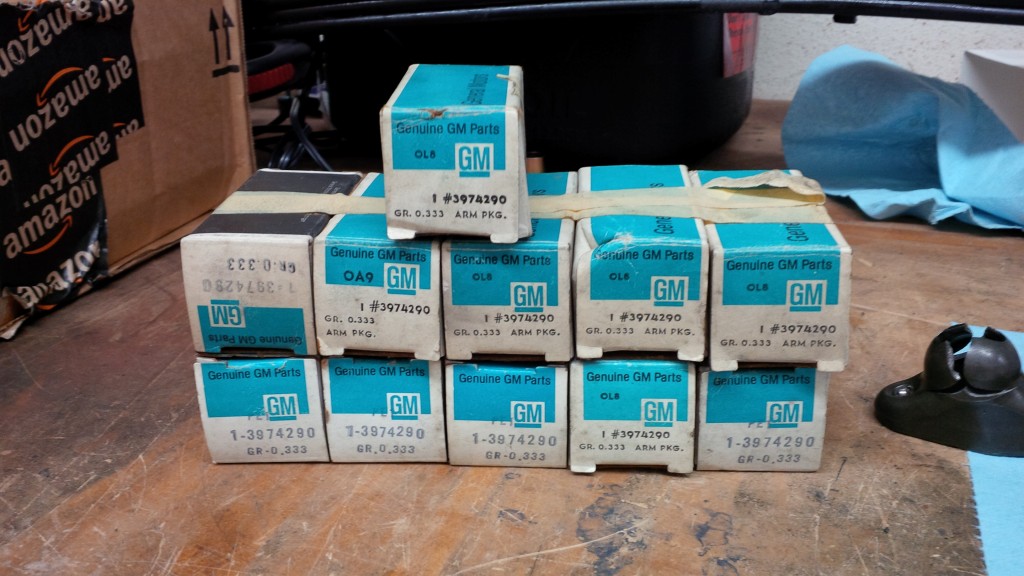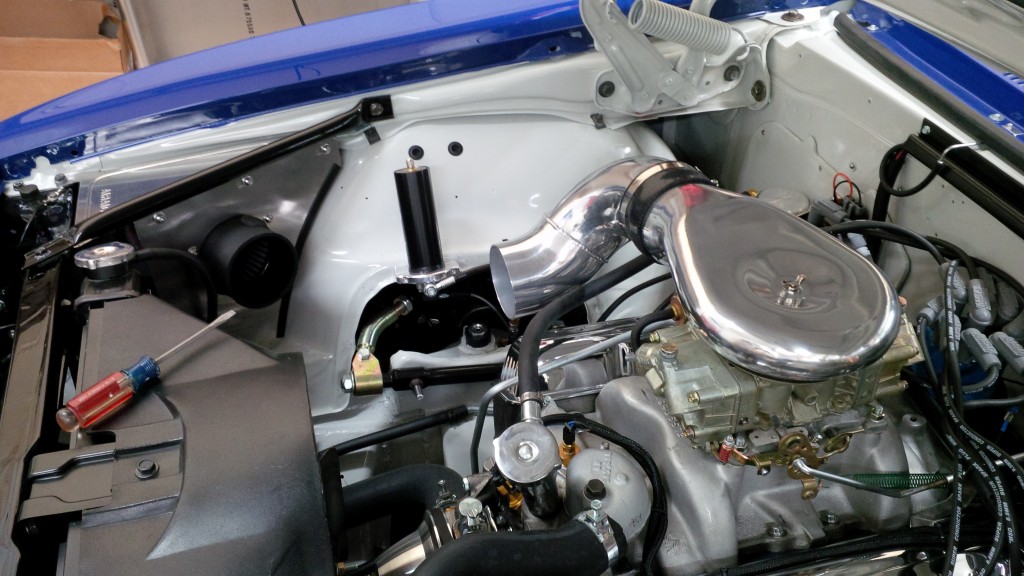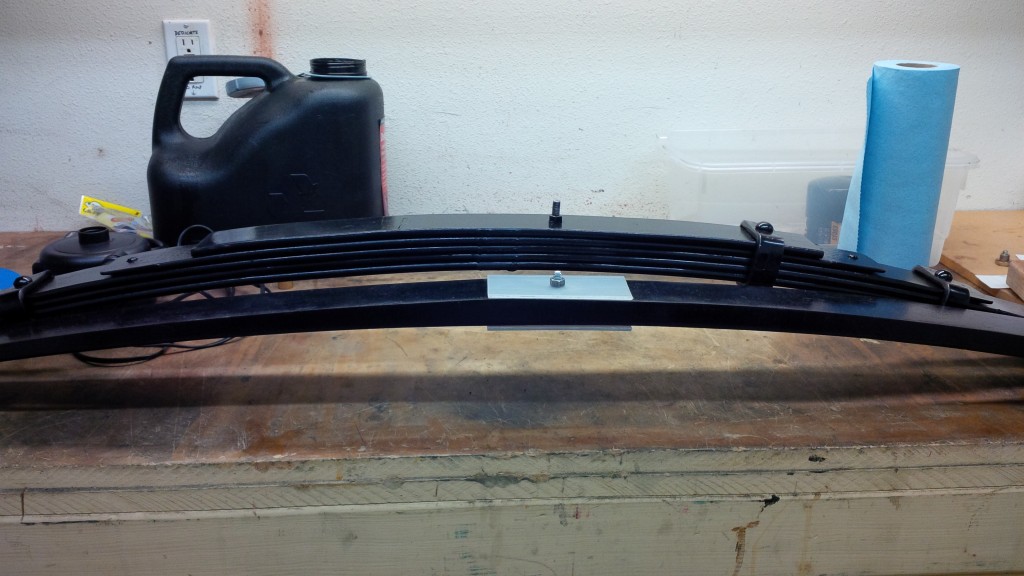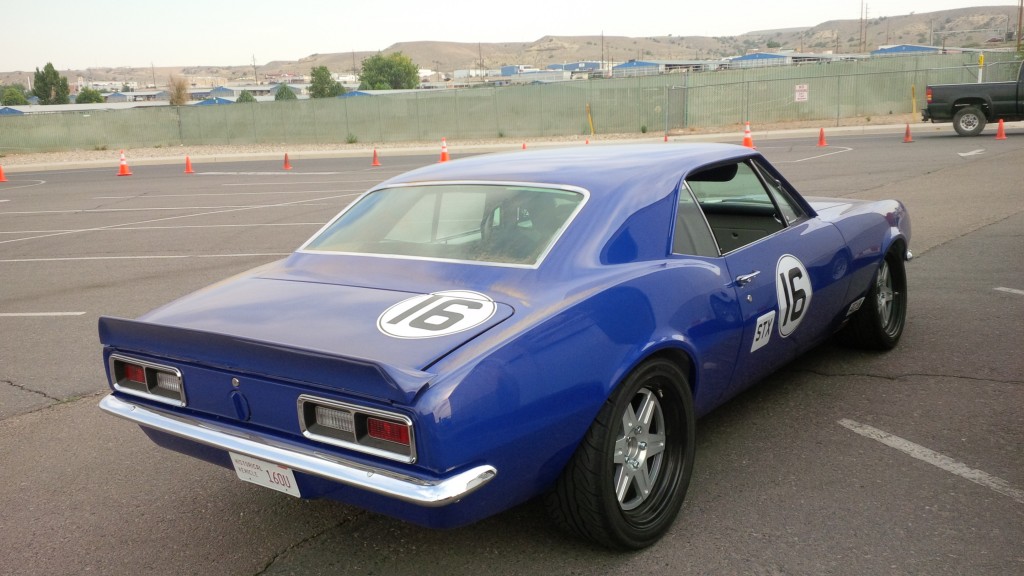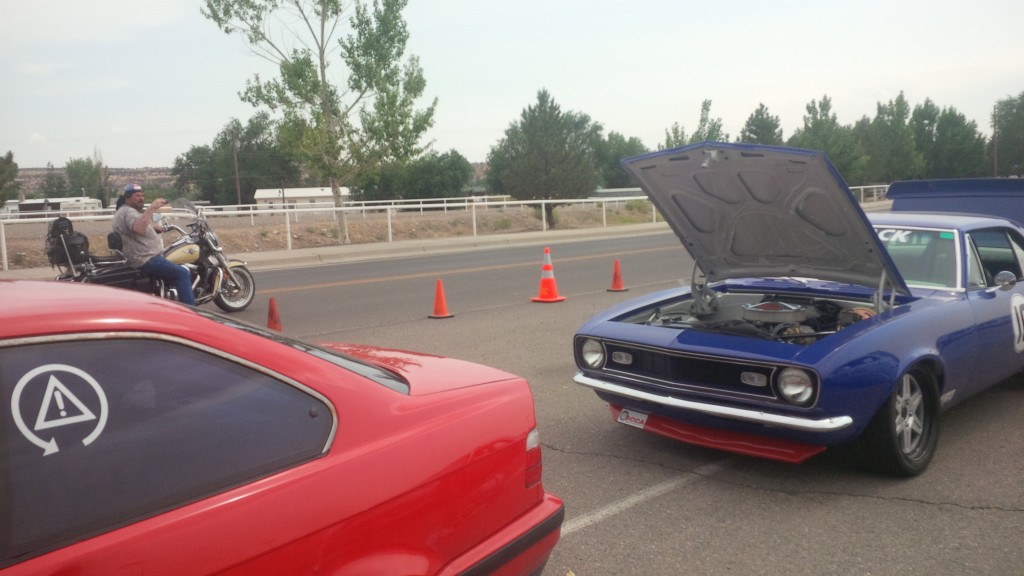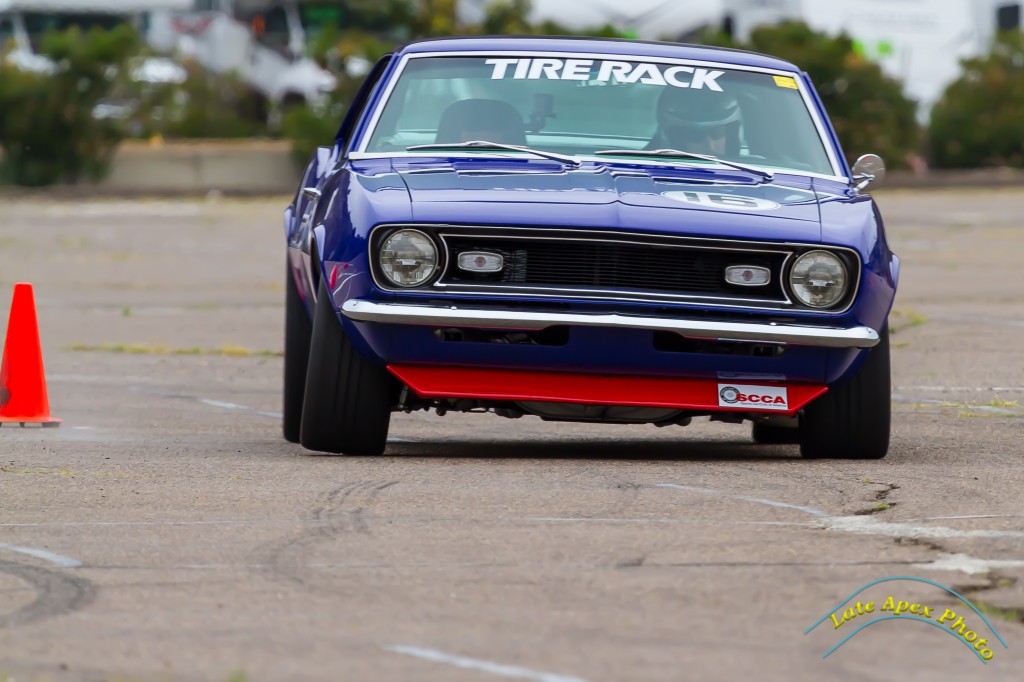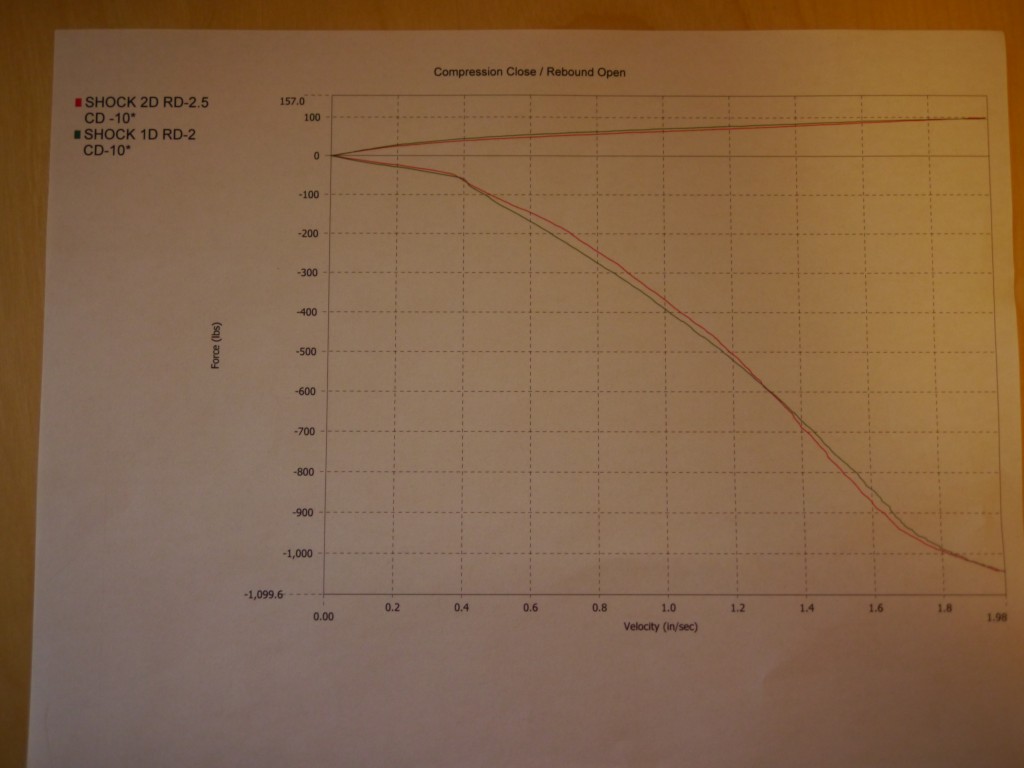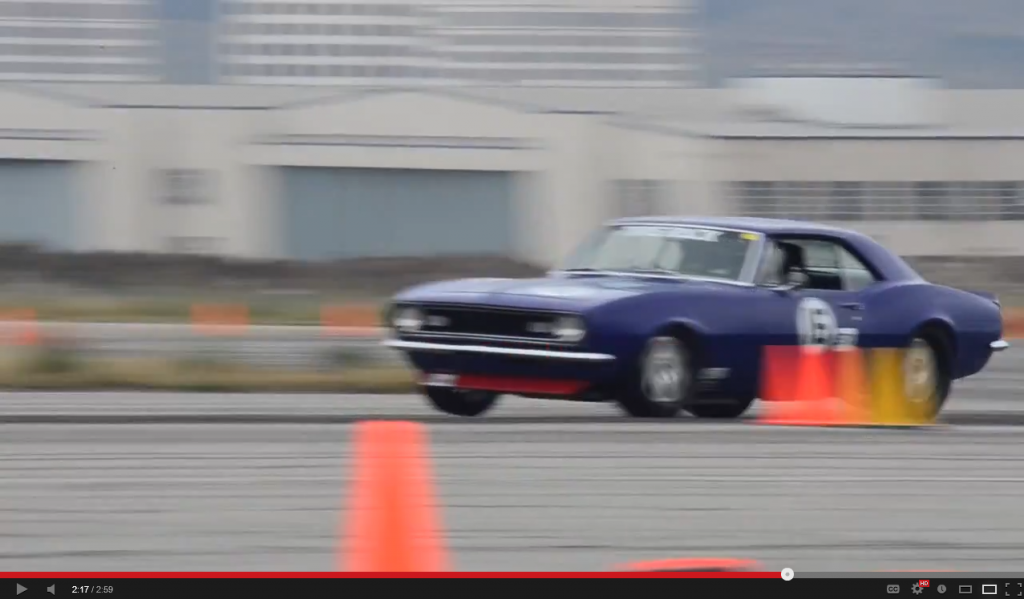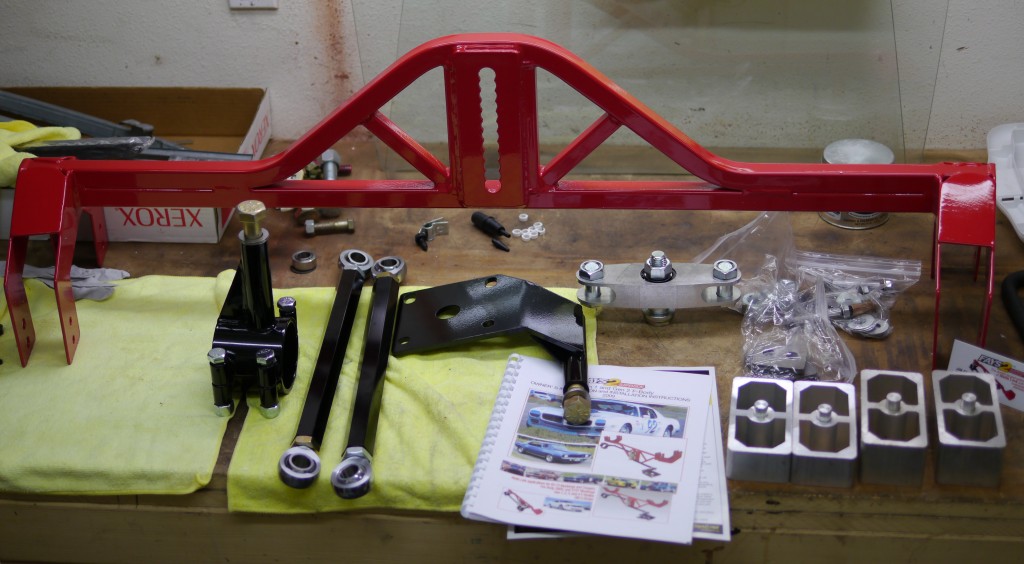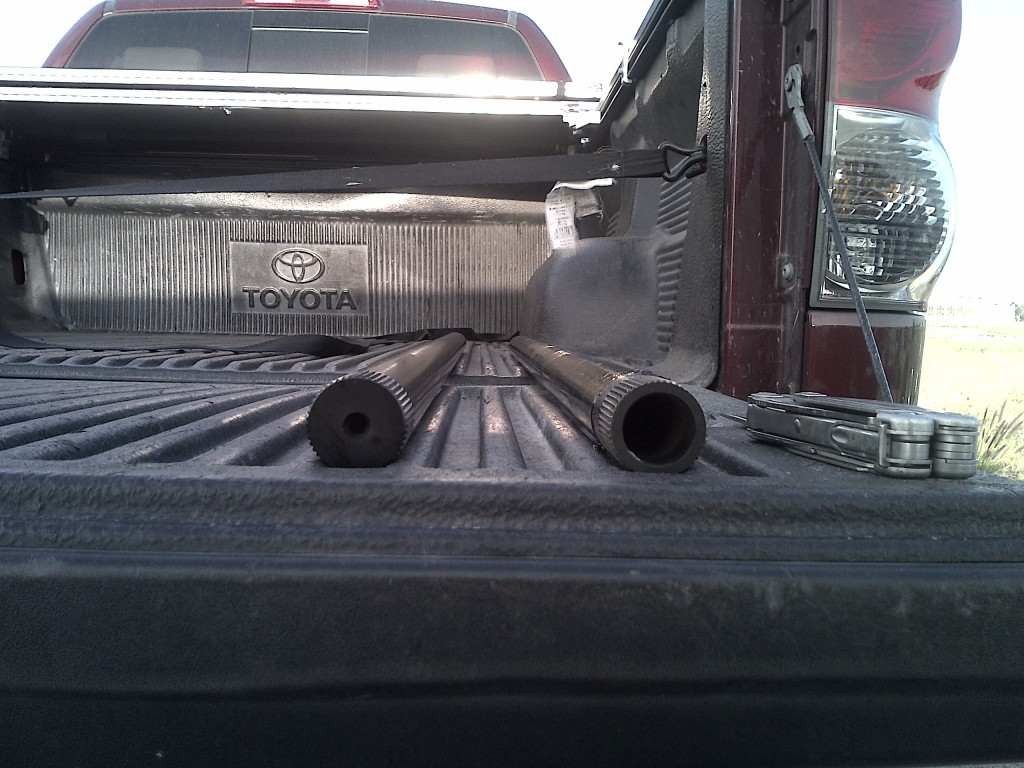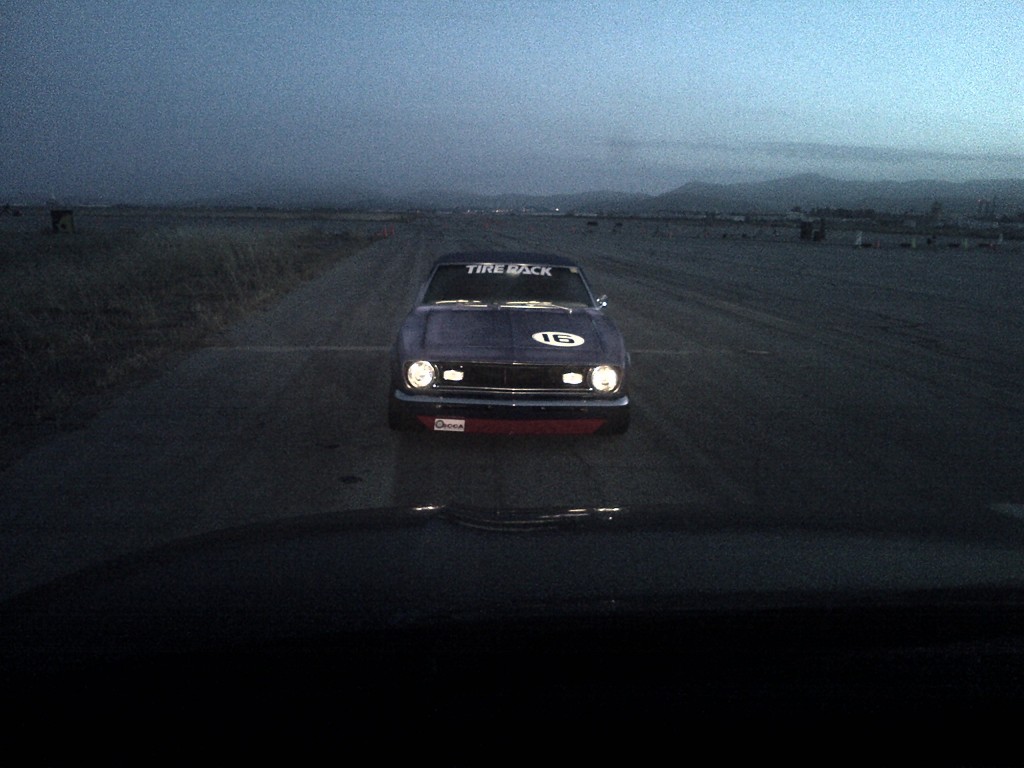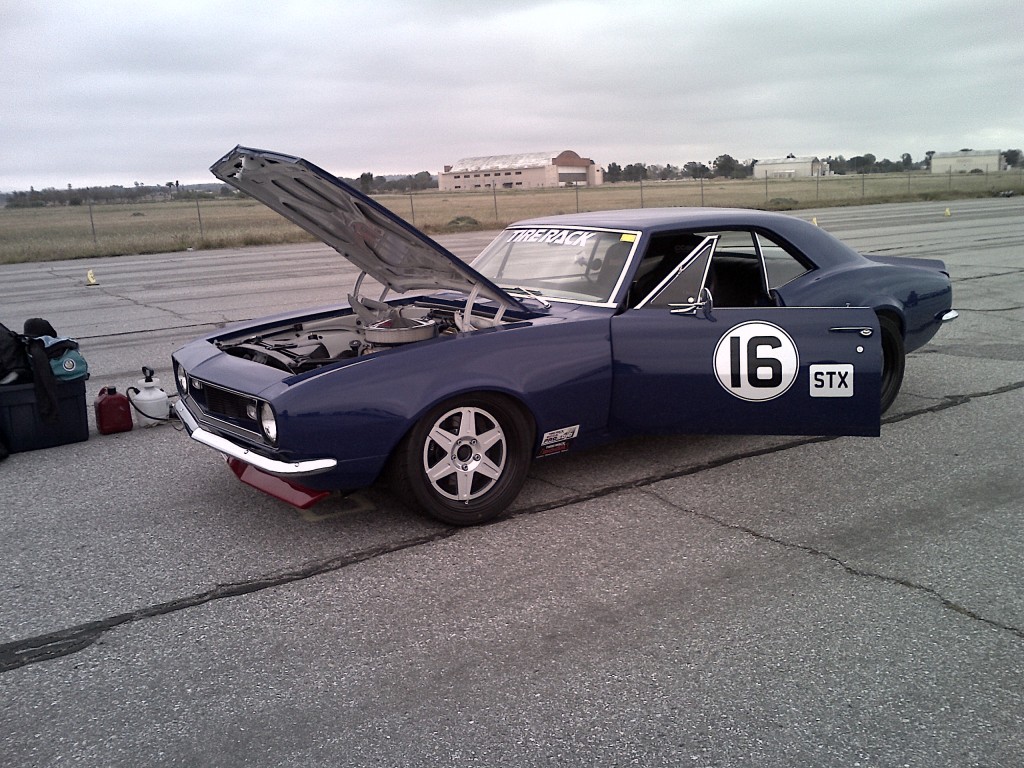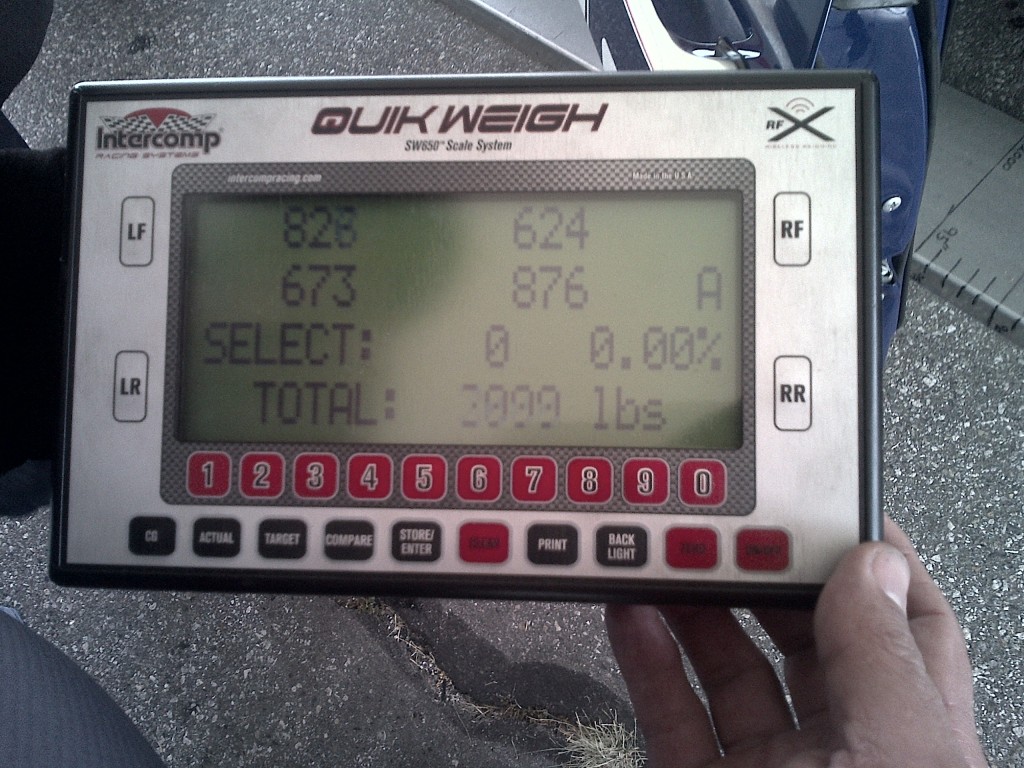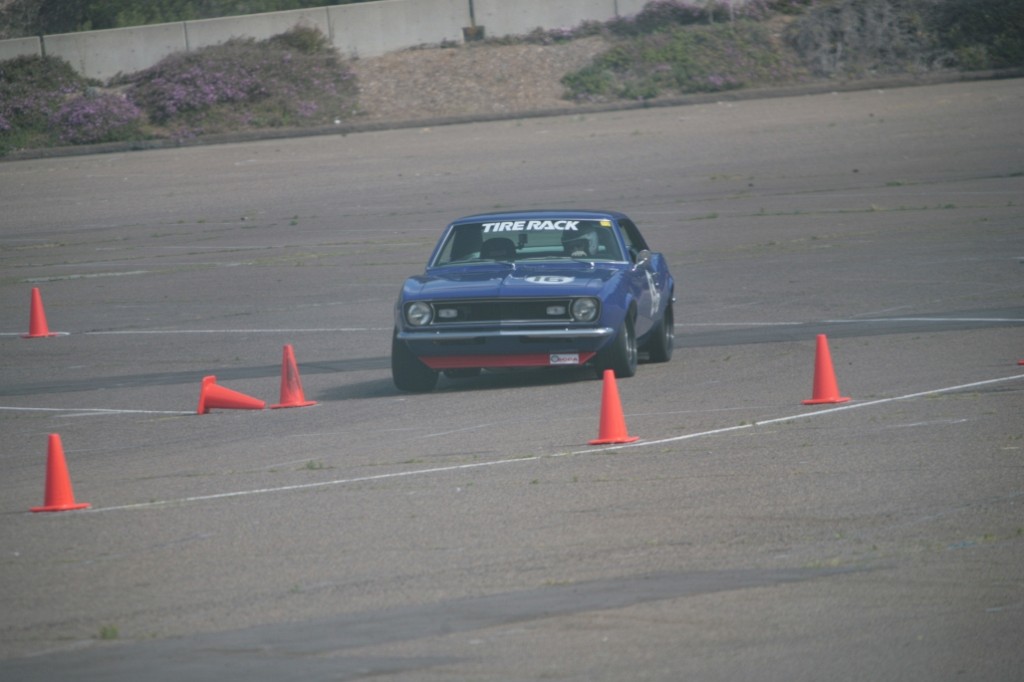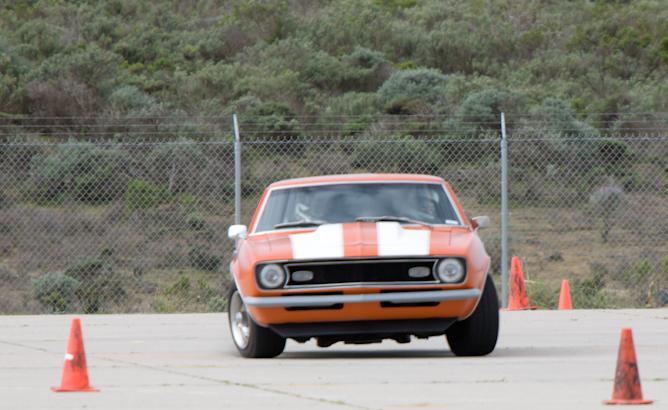2013 year-end recap, status, and look forward
Interesting timing, it was 3 years ago today I bought the Camaro. Even though it took a long time to get the car together and out to an autocross, there was a lot of frantic work there in the middle. 2.5 years is a pretty quick pace for a frame-off restoration, especially when you consider some of the special race fabrication elements that went into it.
Finally feel like I can relax a bit. In the garage sits my dream car – sure, there are things more expensive, or exotic, but this is the car I’d rather have than any other. And there’s still lots to do to make it better!
Let’s take stock of there things are now, starting with a more detailed rundown of how Nationals went, now that I’ve had a chance to look through the data.
{Nats Day 1 – EAST COURSE}
The below is a screen grab of the Motec data analysis software – still learning it, this is really the first time I’ve used it. Here I’m displaying pretty much all the values I’m recording, with my first east course run (with no time) as the Main [M] run, and the run I ended up standing on, as the Overlay [O] run. The Race-Technology software I’m used to allows you to overlay 4 or 5 runs simultaneously which is great for autocrossers, but the Motec software (at least the i2 Standard version I’m using, the “Pro” version is a $500+ upgrade) only allow for two.
What do we see here? A few things, some encouraging, some a little concerning. Let’s start with the positive-
The class winner Jeff Hurst ran a 78.2 on this course. My best scored run was a 79.9. But in actuality, my first run, which had a timer error, was a 79.3, 6 tenths faster. That first run started out slow, but from roughly the 20-second mark through to the finish, my first run was a full one second faster than my second timed run, the one I’d stand on.
This sounds very woulda-coulda-shoulda, but the point is, the car as it was then had at least a 78.9 in it with me driving, and likely a bit more if the course were chopped up into a bit finer pieces. With an even better, who knows…I didn’t drive my best, and am not a pro; seems like somebody really good could have done a 78.2.
The concerning things-
1. Why was the car so much faster on its first run? Well, I spun on the second, which made me extra-cautious in the braking zones of later runs, which shows in the data. Another thing is, the pushrod let go either on that run, or the one where I spun; sometime on that spin run is where I noticed the noise, which heavily distracted on the third and fourth runs. Also, maybe the tires were too warm? Was a single driver on Dunlops, but it was warm out, and the car is a bit heavy, maybe they got over-temp?
2. Oil pressure. The car has a high-end Milodon roadrace oil pan, with three trap doors, dual lateral kick-outs, and it all fits perfectly in a just-barely-enough-room sort of way. But if you look at the oil pressure graph, you can see it drops at times, sometimes into the teens (low of 14!) – and those drops correspond with braking events. The harder and more extended the braking, the more the oil pressure drops. In researching this, some have had this happen when the pickup comes loose from the pump; while that’s possible here, I don’t see it as too likely. More likely there’s too much oil up in the heads and whatnot, the pickup is getting slightly uncovered under braking.
I added a bunch of oil for day 2, but the West course had fewer, shorter, and lighter braking zones, so it’s hard to tell if doing so helped any.
{Nats Day 2- WEST COURSE}
On this course, the story is overall less optimistic. This was more of a handling course, not the sort of place I would expect to do comparatively well on. Here, the class winner Hurst ran a 56.3; my best was again the first run, with a 59.2 – 3 seconds back. My third run was a dirty 58.6, which is still about 2 seconds back. Examining some sector times from this course shows I probably could have done a 58.1 if my own stars aligned, so a 57.x with a better driver in it. Still quite a ways off. The only thing that helps, is that I know my head wasn’t really in it this day, and a really good driver probably could have found a lot more time than I was able to.
###
General observations from the data-
Looking at lateral acceleration – this is something I’m used to seeing from the DL1 in the 240sx and Viper days. I remember the trip to Heartland Park Topeka in 2006, the first time we ran Nationals there. Upon arrival, the 240sx was “only” good for about 1.05g in a corner, but as the surface got better, it was doing 1.25 during Nationals competition. That was on asphalt.
The Camaro is making quite a bit less grip than this, even though the surface is better at Lincoln. The data presented above is smoothed over 3 samples where is says f3 (so 3/25ths of a second average), and while it shows spikes around 1.25 in each direction, the more heavily smoothed values over the course of a corner are mostly right at 1.0. While I haven’t seen others’ STX data yet, I would bet the RX8, FRS, and BMW are making 1.2+ where I am only making 1.0. That matters A LOT.
Longitudinal acceleration is a bit happier tale 🙂
Exiting the last big left-hand sweeper on the West course, the car goes from 35 to 55mph in exactly 2 seconds, even though there was some lateral acceleration in there to create drag. In other places, longitudinal spikes over .6 when lateral is minimized. When the car was running right, it was pulling quite strong.
Below is a g-g diagram showing the car’s “performance envelope” as it existed on its first east course run.
For comparison, below is a similar chart (from different software) from an STR MX5 at a BFG Rival vs. Dunlop Direzza Z2 tire test earlier in the year, on crummy asphalt (San Diego’ Qualcomm stadium southeast lot):
Note how the “top” of the MX5’s envelope seems so flat – that’s the car spending a good bit of time at its power limit, even on a poor surface. In comparison, the more powerful Camaro’s is more oval-shaped, showing how it is able to work the tires to their limit in all directions.
“Okay, all that data was tl;dr, what did I miss?”
1. The car would have trophied if I just drove better.
2. With a superhero at the wheel, it might have got a top 10 (at least 2.3 lower total time)
3. A win (4.6 lower total time) was waaay out of reach.
Why was the car not competitive for a win in STX?
Will get to why that’s a past-tense question in a bit. But here’s the reasons, with the biggest ones first:
1. The car is not producing enough peak lateral grip, and it is difficult to maintain the limit it does have
2. On equal-height f:r tires, there is still too much rearward brake bias, making the car difficult to trail-brake
3. The valvetrain has not been reliable and is costing time either as lost power, a distraction, or both
What can be done about it?
Here’s what the car needs for its ST future. Start by addressing the lateral grip problem with:
1. Ride height changes.
The car is too damn high! I know this was just posted, but look at it again, and look at all the daylight you can see *under* the front splitter.
In the front, the car has yet to bottom out, even over the big bump we had at Farmington. Lowering the front will make a big difference on CG height, and even helps the camber curve. To get the car lower I’ll have to cut the springs a bit which will up spring rate, but that is probably ok, the car is still a bit loose, and I can back off on front swaybar stiffness if needed. Not sure how much lower it can go – probably at least 1/2″, maybe 1″. Will start to look a little funny with the tire tucked up in there so far, but that’s not important!
In the rear, the car was raised about 1.25″ before the start of the Pro Finale, spacer blocks removed to combat the axle-moving-all-over problem. The rear needs to be brought down at least that much, if not more; it too wasn’t bottoming at Farmington over the jump, can maybe go 2″ here.
Unfortunately this isn’t just a shorter spring or twisting a spring perch – this is going to require complete re-engineering of the rear end. In order to retain the leafs and good axle location, the springs will have to be run below the watts link plate on the driver side, which will necessitate fabricating some kind of extended perch to hold the spring.
If the CG can be lowered 1.5″, I believe that’s close to 10%, meaning 10% less load transfer, which I’m optimistically hoping is 5-7% more lateral grip potential, changing the 1.0g to 1.05 or 1.07. Those numbers are all very optimistic, half that is more realistic.
2. Spring wind-up was a problem, not just in first gear at launch, but also under heavy roll-on throttle in second gear. That wind-up makes for annoying hop when going straight, but in a corner, it feels like it works to jeopardize grip. The solution then is a setup that controls torque reaction better than just the leaf springs, while not introducing bind or other undesirable handling characteristics. Torque arms are such devices, as are 3-links.
3. Overall the rear of the car felt not compliant enough. Even though the ride frequency and static weight is much lower than the front, the rear tires were much hotter when coming in from a run than the fronts (and this wasn’t caused entirely by overzealous throttle). Rear suspension compliance will be addressed in a number of ways simultaneously.
3a. First is to have the rear shocks revalved with less bump damping. Even though these have the fancy regressive curves, they’re valved too stiffly; basically, they are at the soft end of what was run on a heavy, race-tired, FWD, roadrace car…a place where you can get away with a lot more bump damping than a street tired RWD dinosaur. Will probably have the new baseline be half to 1/3 the current bump values.
3b. Next will be addressing the bushing situation on the front leafs, perhaps in conjunction with #2 above. Right now the leaf springs have to twist as the suspension moves, and that twisting is another spring effect in roll. If the setup could allow for the springs to have to twist less, or to lessen the bushing resistance to that twist, it should make the rear more compliant.
This lack of compliance I feel is driving the need for a lot of the steering corrections you see me make, and even on the relatively smooth Lincoln surface, contribute to a loss of time. The 1:15 mark of this East course video is indicative; instead of a nice run into the slalom, the rear end gets bounced, and I have to give up any chance to accelerate further-
Improving the compliance should up the limits a little further, and making holding the limit easier over surface imperfections.
4. The rear roll center is probably still too high. This will be mitigated somewhat when I lower the rear of the car, as the watts center pivot is based off chassis height. At Nationals this year I had a chance to speak to both Mike Maier and Mark Madarash, two of the very best drivers and tuners of live axle RWD autocross cars on the planet. While I generally prefer to figure things out on my own, I couldn’t overlook that after peeking under the back of the car they both (in separate conversations on different days) very quickly told me the rear RC was probably too high, and that a height closer to the bottom of the diff (maybe 4-5″ lower than it is at present) is a place they’ve found to work well. The current watts arrangement is a bit against my own ethos, in that I don’t like having an adjustable component always at the edge of its adjustment range, especially if adjusting “more” in that direction could be helpful. I’ve got it as low as possible, but clearly, lower still is worth investigating, even after I bring the chassis down.
That means going back to a customized rear axle lateral locating device…either an altered watts center frame, going back to a panhard, or even looking seriously at a Mumford link. All of these choices mean welding, which probably means pulling the gas tank…all of this, a big project. One that should probably be tackled in conjunction with the axle torque management project of #2.
5. More basic tuning. Still in the early days of looking at photos of the car from Nationals, to see how the outside tires look when loaded up. Have more learning to do about pressures, and have yet to scientifically take temps. I am curious to try the car with a bit less static negative camber (around -6.5 at present) but more caster, to see if that allows for better use of the inside front. Made the first rear shock change, adding a little bit of rear rebound after the ProSolo. I think things could be better with even more rear rebound, but I need to be able to soften bump (already at full soft) and do other things to increase rear end compliance, before trying it.
Instability under braking is perhaps a bit easier, and should be made better simply by switching back to the 1″ taller 40-series rear tires. As Dunlop doesn’t make a 265/40-18, that means Hankook. Given how heavy the car is and how effortlessly it generated heat in the rear tires, this should be ok. To some extent the taller sidewall should also help with rear end compliance over bumps, with the taller sidewall functioning as a slightly taller and softer spring. Unfortunately this runs counter to the CG height lowering efforts but I think will have a very positive effect on overall driveability.
The Valvetrain is due for a thorough inspection, and some other changes to work it a bit less hard. It’s possible the occasional low oil pressure condition is a contributing factor, but I tend to believe it’s a high RPM thing. The rev limiter was lowered to 6900 for Nationals, which was barely enough really. Going to the taller rear tire will add about 2.5mph of top end, and the other change I’m considering is going from a 4.88 final drive, to an only-slightly-less-insane 4.56. Together these would bring 2nd gear’s speed limit to 70, from just under 63mph now. Unfortunately these changes would also reduce the potential 2nd gear thrust by about 10%, but if it meant the throttle was easier to use, might not be so bad, as I spend so little time matted today anyway.
To test the valvesprings to ensure they’re still ok and not cracked means pulling the heads, which probably means pulling the motor, which would also give a chance to review the dinged #2 cylinder from the compression test oopsie. Ugg, another big project. That one can probably wait a bit though.
##
All of those changes added up, I think will make a significant difference in the car’s ultimate potential, and in its driveability. It is difficult to predict a time quantity, but my feeling is the above changes, with another year of practice, makes the car a solid trophy-capable STX car at Nationals. As it was, the car earned a trophy at the ProSolo Finale, which has a generally more die-hard group of competitors than the regular Solo Championships. At the ProSolo the planets of favorable courses, favorable conditions, and halfway decent (for me) driving aligned to benefit the car so early in its development. Another year of tuning and advancement would be seriously beneficial to a car that has now only run 5 events.
Unfortunately
I was lucky to get that trophy because it looks like the days of this Camaro, or any Camaro, in STX are over. The SEB (Solo Events Board) have recommended to the BOD (SCCA’s Board of Directors) to move all ponycars (GM’s F-bodies, and the Ford Mustangs) to the STU class, at the behest of the membership.
As a bit of background, there are a lot of folks with newer Mustangs, especially the 400+hp 5.0 Coyote model, that would like a better place to run in ST, than STX. Their cars start out over 3500 pounds, which is a lot to make work on STX’s 265mm tire, 9″ wheel limit, even after working hard to get the weight in the low-to-mid 33xx’s.
They figured with the unlimited width wheels and 285mm tires in STU, the cars would be much better, and asked to be moved there.
Certainly, I think pretty much all of the ponycars (with the possible exception of the early Mustangs, which nobody runs in ST) can benefit from tires wider than 265, and wheels wider than 9″. The immediate problem though, is STU is generally a much faster class than STX – it is the place of the Mitsubishi Evo and the BMW M3.
As far off of the STX winner as I was, the STU winner was a full three seconds ahead of that. As undertired as the ponycars are, it is difficult to see how 20mm of otherwise identical tire, and 1-2″ of wheel width, are worth 3 seconds over the 2 days.
To make matters worse, in conjunction with the move of ponycars to STU, the C5 Corvette (non-Z06) is also being suggested for STU inclusion.
Without going through the entire Comparative Vehicle Dynamics series I authored, suffice it to say, the ponycars have no chance against a C5 in anything resembling an autocross. There is simply no point running against a C5 in a Camaro, Mustang, or Firebird. Something like an E36 M3 can pray for a course of nothing but slaloms, and the Evo/Sti boost buggies still have advantages in launch, early corner exit, and inclement conditions; enough to keep them in it for a while.
What I hope to see happen is rapid realization of this fact in the ponycar community, and a show of unity and support for the notion of a ponycar-specific ST class. Today, the only remaining successful Street Prepared category class is ESP – the one catering to ponycars – and if an equivalent ST class were available, I think it could be a good success for the category, the club, and the membership. In addition, it would provide a more appropriate place for me to run the Camaro.
Where does it go from here?
The path forward is not clear. One thing for certain, is I am not going to run it in STU against the C5. San Diego is just too far from Lincoln for that kind of nonsense. The car’s continued participation in the Street Touring category hinges upon it either being kept in STX, or included in “STP” – what I hope will eventually be an ST category class for Mustangs, Camaros, Firebirds, Chargers, Challengers. I’d like to see it keep the older and lighter stuff on smaller wheels/tires, and allow the heavier/newer stuff more. If the class is built to make a newer Coyote 5.0 Mustang the “Car to Have”, its numbers should be very good. I’d also love to see the SCCA work to allow certain Pro-Touring cars into this class so long as they started off as an allowed car and then met certain weight and size requirements.
So, if the SEB’s suggestions go through, the car will be sitting it out in 2014. There are some Pro-Touring type events I’d like to run, maybe a local event or something. Willing to keep the car tucked away for a while and see whether there is interest in the STP concept, for which I would bring it back out to support. Gives me more time to get some things done on it at a relaxed pace. The past 3 years building the car, I always had the feeling time was running out on STX as it had existed since 2004, and I got it done just enough, just in time, to snag a trophy in Lincoln.
If the worst happens and there is no future for the car in ST, then some years down the road I may consider making it into an even truer Penske/Donohue clone in CP trim. I’d probably try the light and narrow approach, 10″ wheels and and under 5.1 motor @2700lbs. But I really don’t want to think about that too much, because it means redoing almost everything, and turning the car into a kind of monster I’m just not that interested in right now. Really hoping we can find a way to make STP work.
Signing off for now,
J-Rho
2013 National Championships
Well, that was about what I expected…
After a better-than-expected finish at the ProSolo Finale the weekend before, had high hopes headed into the Solo National Championships.
At the Pro the car finished 5th, ahead of some car/driver combinations I had no business being ahead of. Some of it was a course that favored the car, some of it was in the problems those car/driver combos had. The Camaro at this point is rather tricky to drive – I don’t yet have a good feel for the brakes, am still learning the requisite throttle control, and overall, the car is much less forgiving than it could be. With 6 tries at each course in the Pro, it gives me the chance to learn the correct braking and throttle application points by experience, vs. going by feel or judgment. Worked there, but you don’t really get those chances in the Solo…
The Pro ended on a Sunday, and STX didn’t run until Thursday/Friday. This gave three days to further test and tune the car, and I had time slots Monday, Tuesday, and Wednesday.
Monday’s slot was used to test a shock change, with everything else from the Pro totally left alone. Up to that point, the car had always felt very “dead” in slaloms. At the car’s very first event, I’d turned the shocks from an unknown initial setting (which turned out to be full stiff) to full soft in all 4 adjustments (rear shock description). In general in a powerful RWD car I like the rear shocks set a little softer than you might want for ultimate pure-handling performance, as it makes the car a little more forgiving of incorrect throttle or brake inputs. And the car was so deadly loose early on, full soft made sense.
As the grip in Lincoln was very high and my comfort level with the car was rising, the first real shock change I did, was to take rear rebound from full soft, up to about 25% stiff in its adjustment range. The car responded very well in the slalom on the test ‘n tune course, really starting to come alive in those transitions. “More” might have been better but that was a start, and I didn’t want to overshoot and make the thing a nightmare.
Monday I was approached by the GRM crew, they were interested in doing a shoot with the car. Even at 6:30pm it was still a little bright out to do engine bay shots, thankfully Tom McDaniel was there to lend a hand, and some big sign thing, to help them out.
Tuesday test ‘n tune covered the switch from the Hankook RS3 tires to Dunlop Direzza Z2. As we were running in the first group in the morning, which would be relatively cool, and I had no codriver, I felt this was a more appropriate choice given the likely difficulty I’d have in getting (and maintaining) enough heat in the Hankooks.
The Dunlops were on the new CCW “Classic-5” wheels in 18×9. These wheels have a very nice vintage look, and since they were made with quite a bit less backspace, they can be run without spacers, while providing a much more aggressive “deep dish” sort of look. From before:
Unfortunately the car had a bit of a rubbing problem in the front with the wheels at this backspace. A little bit of rubbing is ok, but I was worried not just about damage, but about what sort of funky understeer moments this extra “brake” on the outside front tire might cause. Cut this session short with 2 runs, and had a pair of the Dunlops mounted on the higher-backspace Jongbloed wheels.
Wednesday’s test session had the new front wheel setup, and I also changed out to my lightweight “Nationals” battery. In the picture below, it’s the one on the left-
It’s an XS Power C680, which is the same form factor as the Odyssey PC680. It’s shown next to the Odyssey PC1200 I’d been running. The lithium battery is crazy light – under 4 pounds. When you pick it up, you’d swear it had to be an empty battery case. This switch saves 35 pounds, and since the car burns fuel so fast, it was probably under 2950 competition weight for most runs.
Speaking of fuel, this thing drinks it up! The tank was nearly empty on the trip out, and I decided to do most runs with the tank full (note the signs of fuel having sloshed out the back in the battery picture above) – and on this trip, the car got over 27 gallons put in…but I think the stock tank is only 18 gallons. Major thirst!
Here is video of my second test ‘n tune run Wednesday:
Was pretty happy with the way the car was working here – again, I’d had several chances to learn the braking points, and how the car was going to behave in each section. This was a 31.1, which wasn’t far off the times I was hearing from the other STX and STR guys – mostly 30.6-30.8.
One other thing I got going Wednesday were some more features of the car’s Motec dash unit. It features a full data logger with 3-axis accelerometers, and I’d also purchased the GPS option. Hadn’t got the time to get it working previously, but thanks to good support from Jeff Feit at Optimum Motorsports was able to figure the last bit out, GPS and data logging all set for the big race.
Thursday was a nice warm morning, thankfully the price we paid in suffering the heat, meant this was a Nationals where rain wasn’t a totally devastating factor for some people (my ninth trip, first time that’s been the case).
First run out felt pretty good on Sam Strano’s east course. Car was running strong..missed some spots and broke way too early in others (including the showcase turn) but a decent first run. Unfortunately when I came in, there was no time!
Turns out that happened to about 8-9 of us. No big deal, I’ll take another free shot at things…
Second run started out better, but not wanting to brake too early or too lightly, I spun the car under braking after the slalom after the showcase turn. Didn’t think my inputs were that worthy of a spin, but there was the rear rebound change, plus the bias had been shifted with the move to equal-diameter rear tires. Bummer, so my first run with a time, is a throw-away.
My “real” second run was an improvement, but still about 2 seconds off where the leaders were running. I was being very careful on the brakes, using them waaaaay too early into the showcase turn, a mistake I saw lots of people making.
Here’s the video – note the head-shake in the middle of the showcase turn (around the :20 mark)
Another thing to note in the video, is what sounds like the rev limiter as the car heads out in first gear. There are a couple other places where it does the same thing in second gear.
While driving, I thought it was the rev limiter, and was surprised how fast the course was; even with the shorter tires and lower rev limit, the car was good for mid 60’s mph in second. Gary Thomason was watching and said it sounded like things were “breaking up” at high RPM, like maybe the ignition was failing, or the valved weren’t adjusted properly. They had been adjusted recently, hmmm. It wasn’t doing that on my first run, but definitely was now, and it was throwing me off a bit, as it was a distracting sound. The one or two times I had a chance to look down as it occurred, the tach was around 6k, not near 7k where the limiter sits (6900).
Third run felt about the same as the second, and was a little bit slower. Something definitely wrong at high RPM.
Much later that day after the engine had cooled, went to adjust valves. The first few were ok, then I got to the #2 intake valve, and found it very very loose. So I tightened it, and it still seemed loose. Then I noticed bits of metal sitting there next to the valvespring. Uh oh. The rocker looked ok from the top…
But not from the bottom. Those bits of metal must have worked their way between the rocker arm tip and valvestem top at some point, causing this damage to the rocker. Fortunately the valve looked ok. The pushrod, on the other hand-
Not so good. Somehow the tip completely went to pieces. Not sure exactly how it happened, but this was certainly contributing to the high-rpm stutter the car had been displaying.
Fortunately Speedway saved my butt yet again, with a box of fresh pushrods. I don’t know in how many towns you can find a place with stock SBC pushrods in stock at 5:30pm on a Thursday night, but I am thankful Lincoln is one of them.
Got back to the site and replaced all 16 pushrods just to be safe, inspecting the old ones, and all the rockers in the process. Fortunately everything else looked fine, no apparent collateral damage.
Was a little tired by the time this work was completed but the car started up and sounded fine in the trailer at 9pm.
…
Friday started earlier, so it was cooler, still dry. I was in high 20-somthing-th place, but that didn’t feel too bad. The car hadn’t been running right the day before, and 2 seconds on a 75+ second course isn’t *that* bad for the car’s first trip out…I could try to close the gap a bit today, maybe move up into the trophies?
Alas, it was not to be. Friday we ran Elliot Spiedell’s West course, which was much more a classical handling/speed-maintenance course (though to be fair there were a few little acceleration spots). Here is my first run, which ended up being the run I’d stand on:
My head wasn’t really in it, and to make matters worse, the car was apparently smoking badly on course. Visual inspection showed the passenger valve cover leaking at the back, oil making its way onto the header. This made sense, as I’d had them off the night before, and maybe didn’t tighten that one enough, or perhaps the gasket didn’t seal.
That was an unwanted distraction from what should have been spent figuring out where and how to go faster. Second run was better in spots, but mistakes in others, working out to almost exactly the same time, plus a cone. Apparently the car was smoking even more now.
Found an allen wrench and tried the only thing I really could with everything super hot – tightening the valve cover.
Unfortunately that did what tightening in these circumstances normally does – it made it worse. I don’t have any good pics yet but apparently on its third run, the car was a James Bond smoke-screen in full effect.
Realizing I was pretty much out of it at this point I pushed the car a little harder on the third run – taking those chances netted two cones – but the raw time was still over 2 seconds off the leader, on a 56-58 second course…which felt much worse than the 2 seconds on a high 70 second course. Partly because the % gap from the lead, but also because the car seemed to be running fine. A bummer result, to never really feel “in the hunt” for a trophy, much less the win. Ended up 29th of 59.
…
What is plaguing the valvetrain? Besides the engine troubles, why was the car so slow? What does the data say? Where do we go from here?
Wasn’t this update long enough? We’ll get to that next time… 🙂
Pre-Nats thrash
Never plan to have it go like this, but it always seems to…
Last Saturday (8/18) brought the car out to run at a little test ‘n tune. Since Farmington, I’d changed out the alternator and voltage regulator, as the car was discharging and heating up the alternator when off. Also did some leaf spring tweaks I’ll talk about later.
Had it on new shaved 265/35-18 Dunlop Direzza Z2’s on some new wheels, also had a new set of shaved Hankook RS3’s on the Jongbloeds, with the idea being to scrub both sets in and do a little compare/contrast. Up to that point had been running a 265/40-18 rear tire, about 1 inch taller.
The course was pretty fast, and on the second lap, something “happened” just after a particularly fast/high-revving section. Felt like the engine was on 7 cylinders. The car had been cutting out at strange times, so I was hoping the problem was electrical.
That’s the intake rocker on cylinder 6. Totally kafluie, bummer. Could tell as soon as I pulled the valve cover, it was sitting in there sideways. Am thankful it was an intake and not an exhaust rocker, as I hear bad things can happen to the carburetor when the exhaust valves don’t open.
Upon further inspection the neighboring areas looked ok; the pushrod was ok, as was the top of the valve. In the rocker’s destruction it didn’t send big shrapnel everywhere, and on a gram scale, its weight is in line with a brand new rocker.
Of course, I couldn’t determine this until getting some new rockers. New rocker arms, for an engine built in 1967, that are legal for ST. In a week.
eBay to the rescue! If you checked Monday, you’d find they were sold out of ST legal rockers for a ’67 Z28 clone. 🙂
The above picture is one batch – a set of 11 NOS rockers with a part number that supercedes (http://www.gmpartswiki.com/getpage?pageid=85941) what was originally put on the cars.
The look, feel, and smell of the boxes brought me back to a time…technically before I was born, I suppose! A real treat.
The other batch was for a complete set of 16 used factory “o” rocker arms – a long story. Wasn’t comfortable in the health of any of the rockers on the car, so all got changed – all exhausts are new, and 5 intakes got used “o” rockers. The #6 exhaust rocker was showing signs it was on its way to suffering a similar failure, glad I changed them all out.
To keep this from happening again, will be lowering the rev limiter on the car to 6900 or 7000. This will take away a few mph on the top end, which is already being further reduced by the shorter rear tire I’ve moved to. Because of this I will likely switch to 4.56 gears next year from the current 4.88. As it is with the /35 out back, the car should be good for about 65mph in second, which is good enough for most Nationals courses.
If it runs that is, will find out tomorrow. Did a totally boneheaded move while diagnosing/examining things – threaded in the compression tester too far while testing the first cylinder (#2).
Far enough, the piston hit the tester when I turned the key…was able to get the tester back out, but it boogered up the spark plug threads a little in the process.
So in addition to the rocker arms, ordered a tap kit for spark plug threads, and an digital endoscope for examining the cylinders. Figured I could use it to look inside cylinder #6 also, where the rocker failed, to ensure it wasn’t caused by any sort of piston-valve contact.
It was a fun tool, for only like $37 on Amazon – a lot cheaper than the standalone units I’d seen for sale. Being USB attached, made it easy to share pictures of my ineptitude like this:
Going to try running it like this, though I know sharp edges can cause all kinds of problems. If it’s no good, I won’t be making the haul to Nebraska.
…
If this is where you are 4 days before you plan to leave for Nationals, you might have a problem:
What else…
Full oil/filter change, along with a 6 quart “clean oil flush” to try to get out anything bad that might have been in the pan, without pulling the pan.
Have some minor exterior/appearance changes that I think really work, people can see them in Nebraska assuming I make it.
Put in a cold air intake – I’d noticed at Farmington, the car was unhappy for Saturday morning runs when it was hottest out. While more power isn’t really what the car needs, this should at least make it more consistent. I also plan to have it help with splashing-fuel management which I’ll explain later.
After Farmington I’d noticed some rubbing in the left rear – the wheel had traveled to places in relationship to the body, it shouldn’t have been able to. As it was, the left side of the axle was sitting about 1/2″ further forward in relation to the springs, than it should have been.
I deduced this was due to the spacer blocks I’d been using – they have a little post that comes out the top, to keep them aligned with the upper portion of the leaf spring pad. As supplied, the post was too long, and I had to cut them down to fit up against the axle. That was fine at first, but I later decided to add an additional spacer that adjusted pinion angle downwards; the thing consumed the post height, leaving no post from the main (1.5″) spacer block to engage directly with the axle.
Well that’s no good! So, new spacer blocks ordered and installed, with full height posts, to keep engaged to axle even with pinion angle adjuster.
All of this leads to my latest thinking on leaf springs – that they’re really not that bad. The problem is nobody makes the right leaf springs so everything ends up a bad compromise.
You don’t want to have to run a spacer block – they separate the parts that are there to help control the axle (the springs, and in my case, the driver-side watts mount) from the thing they are trying to control. This increases the leverage things like hard acceleration and big lateral forces have on the components.
But to have no spacer block, you have to have a spring that has the right resulting shape/height at your ride height. In the world of coil springs this is a piece of cake, because there is big selection on spring rates and free lengths, then you can almost always change your perch heights. With those things, you can account for a lot of variation in sprung weight, desired ride height, and desired spring rate, to get just what you want.
With some quick strings and eyeballs I determined I need a leaf that is roughly flat with the car at ride height. How to get there?
The first choice to make in leafs is steel or composite. Steel has been around forever and it’s fairly commonly known how to get the rate you want. The problem is they are heavy, ridiculously heavy!
In the above photo, the composite leaf weighs less than 10 pounds, the steel weighs over 50! Guess which one is stiffer? You’d be right if you guess the composite.
The problem with composite springs is they aren’t designed to go over-center, or flat. There are varying levels of cloth set in there in different directions, and everything goes backwards when the spring goes from a “U” shape to an “n”shape (or from a smile to a frown, when seen from the side).
Steel should be able to do it, if the springs are designed for it. The steels pictured are the lowest ones Global West sells, which they say lower the car 2″ from stock. Whose car? Those sorts of statements bake in an assumption about what the car weighs – and my car is quite a bit lighter than most, especially in the back.
The steel springs have 1” more “free arch” than the composite pictured, which is already 1.5″ too much free arch. Can maybe have the Global West springs de-arched (a trait unique to steel) but it will take time, won’t be able to do it until after Nats.
Higher res videos from Farmington ProSolo 2013
Stuff on Youtube usually looks a bit crummy, please feel free to download these if you have a decent internet connection.
Left side run (45MB):
jrho_farmington2013_left
Right side run (42MB):
jrho_farmington2013_right
Farmington ProSolo 2013
Got back late Sunday night from the 2013 ProSolo held in Farmington, New Mexico. Lots of firsts for this event.
Starting with the trip there – it was the first time I’d ever driven through a sandstorm. Didn’t look too bad on approach, but turned out to be about 35 miles of 40-50mph winds 90 degrees to the road path.
Truck and trailer took it like champs, and got a few pictures at a couple spots where things calmed down a bit.
Unfortunately the winds blew open the rooftop vents on the trailer, causing a lot of dirt and sand to make it down onto the car.
Yuck! Dirtiest it’s ever been. Fortunately the first few runs got a lot of the dirt knocked off.
To recap from previous events, the car arrived with new rear calipers to reduce rear bias, a bunch more low speed bump damping in front, the rear lowered 1/2″, and a new ignition system.
All these changes were good ones, the car was much better than El Toro.
Another first, was in the reliability area – the car completed all three competition heats (two on Saturday, one on Sunday) without an issue. I didn’t really need to do anything to it all weekend, and could focus on driving and getting a feel for the car.
For those not familiar with ProSolo, it involves a pair of courses constructed in mirror image. Two drivers start from a drag race tree and complete their course, then cross over and run the other side. In each heat you run each (left and right) course two times, for a total of six runs on each course each weekend.
After the first group of drivers ran Saturday morning, I had the quickest time on the right side course! While that is just about the least meaningful thing one could hope to have accomplished in a ProSolo weekend, it felt like a pretty good start, especially since STX had a decent class with 9 entrants, many of whom are trophy contenders at Nationals in the class.
Of course once the second drivers ran thing returned to looking more bleak, especially with Steve O’Blenes’ fantastic performance on the left-side course.
The town of Farmington is a lot like most small towns we autocrossers visit. The people there aren’t accustomed to seeing fancy Corvettes and Vipers and old Camaros, and it was a kick to see them getting a kick out of our cars. The grizzly biker above stopped in the traffic lane to take a cell phone pic while the car was in grid for Saturday afternoon’s runs.
The second set of runs went better, and the last right-side run in that heat was maybe the first halfway decent run I’d put together in the car. It was still a ways off the pace (about .5 on a 36 second course) it only had a bunch of small mistakes, nothing major.
Received many nice observations from folks afterwards, the car seemed to be working better. The “your car appears to be working ok” compliments sounds similar to “your car looks cool” but are a lot more valuable, and this is the first time I’d heard anything like them for this car.
Sunday morning brought cooler weather and a chance to move up. Here are two videos from the morning, my best clean left and right side runs. Still a bunch of mistakes, and overall not very good driving – but that can be improved with practice.
Left side:
Right side:
Have some thoughts on the next round of tuning changes, will put those together in a future post.
This was a good solid weekend and a nice job by the region in putting on a solid event. A bit further than what was my favorite event of the year (Wendover) but Farmington served up some of the transit drama and pleasure Wendover was known for.
Tuning – Iteration #2 plans
It’s more like iteration #20 given how much changed before the car was first driven…but, more changes are in order after the El Toro Pro Solo.
One thing that’s helpful is an external view of the car. Stills and video can tell you a lot. Take for example, the “crazy, it looks broken!” -6 degrees camber I started the car off with. Then look at this picture from the San Diego Tour:
This is on the low-grip San Diego surface, and the car doesn’t appear to be that heavily side loaded – the outside front tire looks to have “enough” negative camber, but certainly not too much, from this angle. Sure the inside front is only halfway on the ground, but it’s so lightly loaded, it’s not doing much anyway.
So negative camber in the front will stay where it is for now.
Overall the car’s handling balance felt pretty good on Sunday morning at El Toro. Some of that may have been the higher grip, but in different situations I felt I could reach the limits of the front or rear tires at will.
At least, most of the time.
The car felt bad under braking, like it kept wanting to kill me. My first spin in the car was under braking, and that was after almost spinning once in San Diego, and once earlier that same run, on the brakes.
My initial guess at brakes was done a long long time ago – http://www.rhoadescamaro.com/build/?p=300 (October 2010). I went with 4-piston rear calipers with 3 square inches of piston area, and 6-piston fronts with 5.06 square inches of piston area.
This has proven to be too much rear bias. The next calipers I’ll try are smaller rears, still 4-piston but with only 1.6 square inches of piston area. That seems like a big change (and it is) but there are a few reasons stacking together-
- The car has too much rear bias now, so it needs some change
- The car at the moment has rear tires that are about 5% taller than the fronts, and if I want to try the newer tires, will need to run the same heights front and rear
- This is a big change (f:r bias ratio 1.6:1 -> 3:1) but that’s what you need in the early stages.
Fine tuning comes later – we are still squarely in the “coarse” tuning phase now.
The other planned change was assisted by another external source, this time video, the documentary embedded in the previous post (http://www.youtube.com/watch?v=meybtwmMxQY)
In it, at the 2:33-2:34 point, you see the car brake for a left-hand transitional type element. The front suspension very quickly goes from somewhat extended (on throttle) to hunkered down.
The speed at which the front suspension compresses there is a function of front damper bump forces. Spring rate comes into play to determine how *far* the suspension compresses, but not so much the rate at which it compresses.
If we recall the shock dyno for the front shocks-
we’ll remember, they are extremely light on bump damping. The shocks are just as geometrically disadvantaged in bump as they are in rebound, where we have almost 1100lbs. @2in/sec.
The soft front bump was another dimension of the “I don’t want the car to push” sentiment that went into its initial setup.
In my experience, a car with too much front bump, won’t turn. This was mostly a problem in the old FWD Civic days (nothing FWD really likes to turn), but I found it could even be a problem on the 240sx if front bump was turned up too high on that car’s Koni 28’s.
This is maybe the first time I’ve experienced “too little” front bump. But I’m jumping ahead here – let’s look at it as a handling issue to solve:
- Even after getting the toe mostly corrected, the car feels vague at turn-in, and too loose in transitions.
- Turning under braking is deadly!
- Mid-corner (steady state) and in corner exit, the car feels great!
The mid-corner part makes me thing the spring/bar/roll center parts of the equation are *close*. Too soon to call anything perfect, but close, a lot closer than shocks.
Referencing again my favorite shock tuning guide: http://www.ozebiz.com.au/racetech/theory/shocktune1.html
The car is way too loose in phase 1 and 3 – and as rarely happens when looking to shocks, there is a change I can make there, that fixes both – more front bump! The no-free-lunch part is it should loosen the car a little in phase 3B, but maybe that’s ok, we’ll see.
The Camaro has been at full stiff for front bump since Sunday in San Diego, and could use a whole lot more. Again, part of my mantra is that no adjustment should ever be at its limit under normal circumstances, and because of the coarse nature of early tuning, I’ll be making a big change.
Front shocks will be going back to ProParts for a revalve. Rebound is good where it is, but with bump I’ll be looking for an adjustment range that puts 700lbs @2in/sec. at the midpoint. That’s about 7x the bump the front shocks have now. But keep in mind, as it relates to the actual chassis, with motion ratio accounted for, it’s about the same as having 250lbs. of bump at the rear shock, a more typical force level.
Last bit of tuning in regards to steady-state and the lateral load transfer distribution – to provide for maximum accelerative capability out of the corner, we want as much weight as possible on the inside rear tire at corner exit.
To do this, requires unloading the inside front tire completely. But you don’t want it lifting too high, or too often. This is a screen capture from the documentary video, showing the car crossing the finish line under power – it looks like it just barely for a millisecond, lifted the tire. Didn’t notice it doing it from the driver’s seat, and it only did it a tiny bit for a tiny moment, making this another indication that this combination of springs and bars is pretty close to how it should be.
Will probably be a while before I get the car back out again (also need to replace the ignition system – again) but it should be a lot better next time. Have a lot of time to make up on the rest of the STX field!
El Toro Pro – distributator issues but signs of promise
Didn’t have a chance to attend to the car in the week between the SD National Tour and the El Toro Pro Solo, but did manage to get the Friday off.
Arrived at El Toro around 10am Friday and got to work on the car.
The ignition system had been acting funny at the Tour, and I decided to replace all of it – the distributor, the coil, and the ignition switch, with new but identical components.
Since the car wasn’t yet running, replaced them all with it still in the trailer, which was fine for the stuff in the engine bay, but a pain to do the ignition switch – had to climb in then contort myself around and under the dash without opening the doors, to get the switch out.
Even with those replaced things weren’t quite right, and it wouldn’t be until late the next day, I’d realize it was because one of the main wiring harness plugs from the engine bay to the firewall, wasn’t snapped in all the way.
But Friday evening the car was starting and running, and while I missed out on practice starts, did get a chance to make a couple planned suspension adjustments to address the handling.
First was lowering the rear roll center.
In the pic you can see there are 12 “holes” in which one can place the pivot bolt for the watts. In the interest of not having an understeering car, I’d started at hole #8 (bottom being #1, top being #12, keeping in mind this photo shows it upside-down). Not knowing how big a difference this would make, I lowered it as far as I could, to hole #2. Holes are 1/2″ apart, making that a change of rear roll center height from ~13″ to ~10″.
The second change was to a stiffer front swaybar-
This is part of why I like modular sway bars so much – for not much $, can shift the adjustment range upwards. On the right is the old .188″ wall bar, on the left is the new solid unit, about 20% stiffer.
Saturday morning the car started fine, took off for my first run – handling felt much improved! Unfortunately, halfway through the run, the car cut out, then sputtered for a couple seconds, then shut off. Was able to coast most of the way to the finish, and some helpful folks assisted in getting it pushed to the broken car area near impound.
Hood went up and the work began, probably 11:30am.
The fuse for the ignition circuit had blown. I replaced it with a larger fuse, and it blew instantly. Hmmm.
Removed everything from the ignition circuit except for the wire to the distributor, and removed the wires from the distributor to the coil – instant blown fuse. Hmmm.
Multimeter shows near zero resistance in the distributor (the brand new one put in the day before) – fried/shorted distributor. D’oh!
Swap in the suspected bad distributor from the day before – it’s not working either. Try swapping to previous coil just in case, nope.
A kind fellow from C2 Motorsports has been helping me for hours but now has to go.
It’s now about 2:00pm.
Head to local Pep Boys, they have a couple decent high-performance distributors for a small block chevy. If it had been 1983 or 1993 instead of 2013 I probably would have had a lot more options but they had a decent looking Accel unit.
Get back to the site and work to get it put in. This one is HEI so the “head” of the distributor is bigger around – after a lot of effort I get it seated, but…it is so big, it only goes in one way, and there’s no way to “clock” it to get the initial timing where it needs to be. A little searching reveals the common mod done alongside an HEI distributor install “hammer the firewall” – not an option here.
Back to Pep Boys to return the Accel. The only other option now is OE replacement stuff. They don’t have a high-performance Z/28 dual-points distributor but they do have the single-point unit for a standard 327 or 350. It’ll have to do. I try to be thorough and be sure to leave with a new cap, rotor, and even an extra set of points.
Back at the site (probably 5:30 now), go about installing the OE stuff. Get the cap on and…duhhh, my spark plug wires aren’t going to work with this cap! The OE points-style cap is female, the wires I’d made were for a male HEI-style cap.
With the sun sinking lower in the sky, and even the worst possible ignition option still a long way off, this is probably the low point of the weekend.
At this point someone I don’t know approaches and jokes, in a great southern drawl, “I hear you got a prob’m with yer distributater?”
Just like the weekend before, the Solo community again helped me get through a tough spot, this time with a laugh.
In a desperate move to avoid the inevitable, gave the Mallory distributor used at the SD Tour another try – nope, it didn’t magically fix itself.
About 6:45pm now.
So back to Pep Boys yet again (this was actually trip #4 that day, since I stopped by on my way up for some detailing products) – this time for spark plug wires and a crimping tool. Had these things at home, but that was far away and it was still a little light out.
Back to the site before sundown, get the points distributor in and cap on. I notice there’s a little window on the side of the cap that can slide open – I ask Gary Thomason what it’s for – “it’s for adjusting the dwell”. DWELL?!?!?! Oh man, like I have the tools, much less the know-how, to adjust dwell. This junk is going to have to run as it came out of the box.
Around 8:30pm as I’m trying to make spark plug wires on the passenger seat of the truck by its crummy interior light, Thomason suggests it might be easier to make them at home. With the El Toro gate closing at 10pm, figure there’s no way I’m getting it running tonight, and decide he’s right.
Once at home, with a nice ratcheting crimper and good lights, I get the wires made and get to sleep by 11:30pm.
Up at 4:30 and back to the site by 6:05am-
Not happy about having left the car out overnight, but not much choice.
Get to work installing the newly made spark plug wires, which are all way too long. Then it’s time to get initial timing set, which takes a while. The distributor is geared off the crankshaft, but it is also keyed to the oil pump, but I eventually work out a technique, not having my oil pump rotation tool, to rotate it to allow for moving the distributor around till the timing is close. Along the way the car starts and runs (poorly) with 90 degrees of advance!
Steve O’Blenes comes by and saves my butt for the second weekend in a row, making the coil tower wire (which I forgot needed an HEI style plug at one end) and helps me get the engine idling and timed with his fancy test kit (since I now have no tach signal from this distributor).
Eventually I get it around to 20 degrees of initial advance which it likes a lot, and leave it there. Free-revving up high with the vacuum detatched and plugged, it looks to advance to 37 total, which should be ok.
So I drive it back to my regular paddock spot, probably 9:30am now, cars have started running.
Thomason is checking rear toe on his Viper…since he’s got the equipment handy we check front toe on the Camaro. I’d eyeballed it as “toed out” but never measured properly.
1″ out! Oops.
With some STX cars already headed to grid I jack up each front corner and toe them in a bit. Not very scientific in the amount but it should be closer. Steering link threads are very coarse.
Car is a little finicky to start but eventually it does, and make it to grid in time. On the way there, steering feels much more normal now with toe settings slightly less ridiculous.
Leave it idling, lest it be snotty and not want to restart. A few things combine to make starting difficult – some of it is all the ignition advance it wants. Another is when the car’s been run a while, the headers heat-soak the starter, making it more difficult to turn. When it’s really hot, the fuel in the carb and lines gets hot too.
Eventually we get our chance to run. Starting on the right side, and pretty much right away I experience the “natural rev limiter” brought on by the points ignition. It feels like it starts sputtering by 5000rpm (about 48mph) and wouldn’t rev at all over 55-5600. Can’t really tell without the tach. Low and midrange felt softer too.
At least I got a run in!
Left side went a little bit better – video here (158MB):
First left-side run at El Toro Pro Solo
I was going light on the throttle in the high rpm sections (which was most of the course), not sure what the ignition issue might be doing to the engine. With a little heat in the tires and the rubber-coated surface of a clean Sunday morning ProSolo course, the grip felt great. In the middle of the turnaround the thought, “Oh $#%! Hope that oil pan is doing its job!” popped in my head – the car was actually cornering well – and on exit it got even better! Could use practically full throttle on the way out. Granted I may have been down 50-100hp but it felt great! It was still loose on entry and a bit sloppy-loose in transitions, but wow, what an improvement!
Second right side run I tried going to third gear in two spots to keep the car accelerating above its sucky 55-ish terminal velocity. With the close-ratio 4 speed the car actually accelerated well in third, but with basically zero experience shifting this car in any situation and no good feel for where each gear is, the downshifts were awkward, and the car seemed extra-loose transitionally without the second gear engine braking. Still managed to drop time with an awful run.
Last run on the left side had a horrible light and launch, but I pushed the car a little harder and decided to keep it floored in second gear even as it kept popping and sputtering at high RPM. Stupid points would be coming out right after this anyway. The run was going really well – a little brake-induced oopsie into the turnaround, and a little hot into the slalom, but then it all went to pieces in the right-hander afterwards (142MB):
Second left-side run at El Toro Pro Solo
In looking at the data from that run, it would have been about a second faster than the first, taking away the horrible launch and up until the spin. I didn’t countersteer as far as I could in the spin’s initial slide, after damaging one of my upper control arms (which will necessitate replacement of one of the SPC arm’s segments) saving a spin at the SD Tour.
In impound the car drew quite a crowd. Why now?! I was so embarrassed by the ugly blue spark plug wires strewn all about, most 2′ too long, held in with ugly untrimmed zip ties. Oh well.
Since I worked so hard on the car I’m giving myself a temporary pardon from the crime of stacking excuses and woulda-coulda-shoulda’s, so – if you figure that could have been a mid-high 50.x run, and it was only my second complete lap on that side, things look pretty good. The leaders were mostly in the 50’s in their first couple runs on that side Saturday morning. I’m still quite a ways from having the handling sorted, and the car was *way* down on power, which actually did have a cost on this course, even if it did maybe make it easier to drive. Plus my own driving isn’t that good, still a bit rusty, and need time to adapt to a car.
I feel strongly that this car, at full power, with the handling better sorted, current-generation tires, and me driving well (not to mention getting all 6 tries at each course!), would have been competitive at this event.
Oh, one final bit of optimism – got the car on the scales after my runs. While the below looks like a corner-balancing shop’s dream, in reality the scales had just come back from being under the Berry’s broken SM Evo, and weren’t put back in the right places – so, the 8xx weights are fronts, 6xxs are rears. The scale location isn’t leveled so corner weights would be way off anyway, but f/r and total should be right.
Total was flickering between 2999 and 3000 – yay! That is 9-10 pounds lighter than I’d estimated (3009) based on published curb weights and component part weight deltas. More nose-heavy than I’d like but I’ll take that over being heavy everywhere.
Pretty much the only weight the car could lose from here is in the back – the lighter battery could be about 35lbs. saved, and if the car can be run lower on fuel, that could be a lot, depending on how much lower. It was completely full for Saturday morning (18 gallon tank) so it probably still had 15-16 gallons in it at time of measure. If it were like a Viper or Corvette that could run down to just a few drops in the tank, this thing could see a potential Nationals race weight of 3000 – 35 (battery) – (14 gal x 6.25 lb/gal = 87.5lbs) = 2877lbs. Of course it isn’t, and conventional wisdom says you have to run a full tank in these things, so it’s not likely to ever get anywhere near 2900 in competition.
Compared to my old STS 240sx, this is about 130lbs. heavier at each front corner, but only about 40lbs. heavier on each rear corner.
Still, I’m pleased with the result, and this answers one of the big questions from early on in the build. Seen staunch estimates from people convinced it would weigh 2700lbs, and others convinced there’s no way it could get below 3300. As often happens, the truth lied somewhere in the middle… 🙂
2013 San Diego National Tour / Test & Tune
An SCCA National Tour is a big event, lots of people from all over come out, usually on fresh tires and stuff, bringing their best to see how they stack up against some of the competition they’re likely to see at the National Championships later that year.
Tours are a 2-day events, 3 runs per day. Not a place to get some extra runs in for practice. Generally not the best place to debut a car.
So of course, that’s what I did. They kindly have a sort of test-and-tune the Friday before, but I didn’t make that either, working on the car up until 4pm or so that Friday.
Thankfully, it held together.
At least, mostly…will get to that later….
First things last – results were terrible. Myself and the car were extremely slow…much slower than I thought. Averaged about 5 seconds per day off the pace.
When I first built the 240sx for STS, ran it once stock, with just some used Falkens (then an ok tire) and was about 4 seconds off the pace. Granted, the 240sx was a rather well-balanced and neutral car from the factory, whereas the Camaro is awful, but in this case, I am an extra second back, and the car already has everything done to it!
There are a few explanations (excuses, perhaps) that might help make the outlook appear less awful than it otherwise might-
- The car really only had about 20 miles on it going into the event. The engine had been broken in on the dyno but everything else – rear end, transmission, steering, brakes – were all either rebuilt or new. This had me being a little more conservative than otherwise.
- The car was too loud for SD so sound meter shenanigan-erry impacted the times somewhat.
- I am on a previous-generation tire, the Yokohama AD08, the competition was on Dunlop Z2. Not sure how much difference that makes, possibly only a tenth or two, possibly more.
- I have not driven competitively on street tires in a long long time. Last year at the El Toro ProSolo I ran Michael Heinitz’s car on street tires, and ended up running about a second off his times (on a shorter ProSolo course) – which means I was probably giving up 1.5-2 seconds just not driving well (more on that later too). I take a while to adapt to a car and get fast in it. Took me 3 years in the Viper!
- The initial setup was way off (let’s get to that now!)
Almost every picture I’ve EVER seen of a first gen Camaro going around a corner, the outside front tire is unhappy at terminal roll. Remember these?
I wasn’t going to let that be me!
Taking it further, people think “wheel perpendicular to the surface” is an ideal, but in my experience it’s not, especially with street tires, due to carcass (and even wheel) deformation under load. So I gave the car a lot of negative camber up front – minus six degrees. Now, the tables were turned, and instead of me thinking everybody has too little negative camber, now everybody approached me to remark on how much negative camber I had. They couldn’t believe minus 6!
Another thing I’ve heard, is the cars always understeer. This makes sense too, because of how bad the geometry is, and how people tend to run so little front tire. Easy to fit a lot of rear tire, and while a leaf sprung live axle isn’t winning any engineering awards these days (or even in the 60’s), at least it doesn’t put the outside tire on its outer sidewall in a corner. Guys have to sell their souls to make the cars turn.
Not gonna let that be me!
Car got relatively stiff rear springs, and I’d set initial position of the watts link center pivot rather high. The pivot point determines the rear roll center, and having a high rear roll center means the linkages are taking a lot of the roll moment instead of the springs, which makes it roll less, and shifts the balance towards oversteer.
So, the good news is, I was able to put together a first-gen Camaro that doesn’t understeer! 🙂 The bad news is it was extremely “loose” as we say, wanting to kill me with just about every (admittedly not as smooth as they could be) steering input.
It didn’t really occur to me while running, how loose the car was. It wasn’t until I saw my in-car video on Saturday that it became clear how bad it was. Between days I softened the rear shocks considerably (which were set where they were when shipped – full stiff on all 4 settings) – taking them from basically 30/30 to 3/30 on each of the adjustments. The reduced axle control did produce some axle tramp on Sunday so I’ll have to get some of it put back in, especially for the ProSolo launch.
Below is a link to a Sunday run video – the file is rather large, but I don’t feel like giving Youtube the rights to it, so you’ll have to download from me (~183MB):
Video: Jason Rhoades STX Camaro sdTourDay2Run2
The quality isn’t bad, but not perfect either – the camera is mounted to the passenger seat which shakes a little – ran the video through some stabilization software that makes it less dizzying, but also makes the video appear a bit foggy IMO. Will work on better securing that seat.
Very happy with camera position though. I feel it is extremely important to be able to see the driver’s input in a car video, and this spot picks up not just wheel (most crucial) but also pedals, which is neat. If the camera had been in one of the traditionally useless places like on the roof or the hood, it would be much less obvious from the video, how loose the car was.
All this said, a good pile of excuses that adds up to three, maybe four seconds. Finding that fifth second is going to take some kind of real breakthrough, hope I can find it at some point.
###
Continuing the story of the weekend, the car made it through Saturday fine. Jonathan Lugod brought a serious big nylock nut after first or second runs that day, saying someone thinks this fell off your car while on course – it didn’t occur to me at the time but it did later, I had dropped that nut inside the front crossmember while fastening the rear bolts for the front lower control arms. I fell into an impossible chasm there (at which point I just went and got another one), and the motions of autocross must have worked it loose!
Saturday night I didn’t disconnect the battery, and something in the system drained it down to 11 volts. This was bad, was barely able to get it started, then kept it running through first two runs Sunday.
Coming in from my second run, discovered the passenger side header bolts had worked their way loose. Apparently this is a common problem with new header installs. I have some fancy “Stage 8” fasteners on there with locking tabs that keep the bolts from rotating, but unfortunately hadn’t had a chance to put the tabs in yet, so they were all quite loose. Shut the car off to tighten them…and then couldn’t get it restarted. Some of that is heat soak – especially with headers, these cars are notoriously hard to start once the starter solenoid gets hot. It was really disappointing, as I was starting to get a feel for the car, loose as it was (download the video above if you haven’t already).
This is where I start thanking a long list of folks – several tried to help get it bump-started – Jeff Cawthorne, Steve O’Blenes, Charlie Davis, and probably a few others I didn’t see. It was fruitless, so Charlie let me run his BMW (huge thanks Charlie!!) as his co-driver Bryan Heitkotter couldn’t make it today.
Hadn’t driven an STX 325 before, and this was a huge opportunity – to experience the car that the leader from day 1 was in, the same car that won Nationals the year before, and was my main competition. It was also a lot of fun! The car was very well balanced, power was “okay”, overall it didn’t have any faults. Made me realize even more, how badly the Camaro had been trying to kill me with ridiculous oversteer…
Dropped almost three seconds with that one run in Charlie’s car. Still 1.5 seconds back from the day’s (and overall) leader Jeff Stuart’s time…which shows again how much I am leaving on the table as a driver at this point. Jeff was a ways back from Bryan on day 1 but felt day 2 would have been much closer.
After the run group finished several people helped me work on diagnosing an ignition issue that seemed to develop somewhere that day – this just goes to show you how awesome and helpful the SCCA autocross community is!
- KJ Christopher, who lent me electrical tools and wires, not to mention many electrons charging up the car’s battery, and my now-depleted jump pack
- Eric Clements, who help the voltmeter on some potentially zappy things while I turned the engine over in troubleshooting
- Fred and his wife Alexandra Zust, who helped me push and ratchet the very heavy car up into the trailer on a warm day. Also to the other fellow helping whose name I didn’t catch.
Thanks to all of you, you guys all rock!!
Have a lot of planned changes in mind to implement for next weekend, the El Toro ProSolo. The increased grip provided by the surface there should make the car tend towards understeer a touch, but I’ll be lowering the rear roll center and increasing front swaybar stiffness anyway. Need to put some more rear shock damping in to tame the axle tramp, which you can hear in a couple places in the video.
Last thought here is just on how much fun this thing is to drive. It is going to teach me throttle (and brake!) control like I haven’t needed since running Gary Thomason’s SM2 Corvette in 2005. There are some similarities – obviously this is a lot less powerful, but the power:grip ratios feel somewhat similar in that overaggressive application of throttle (the sort of move that would be perfectly fine in any other ST category car) zings the back tires in a way that makes you think you’re either out of gear or have a badly slipping clutch. If we ever get a good ProSolo launch surface the thing will be an ANIMAL! 🙂
